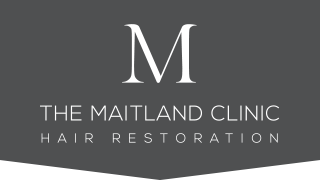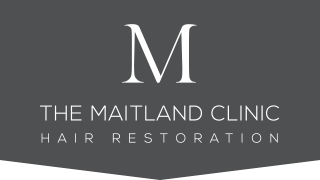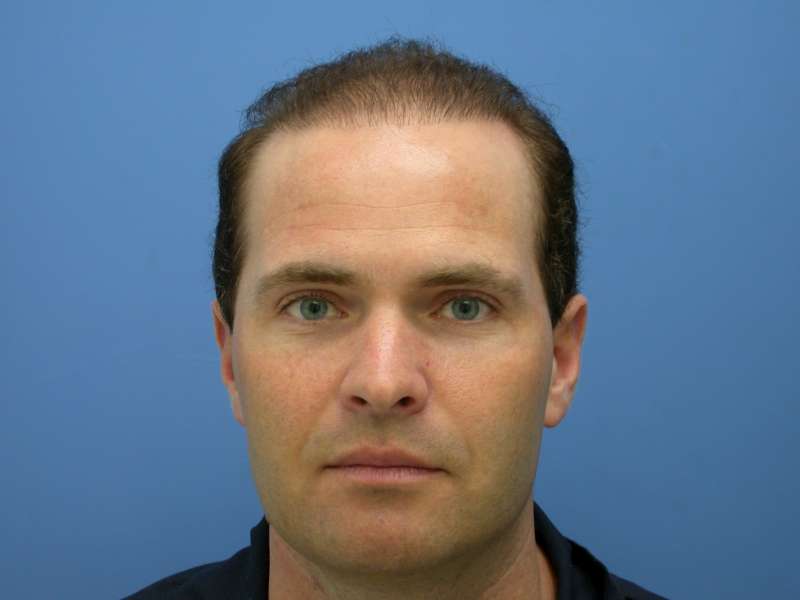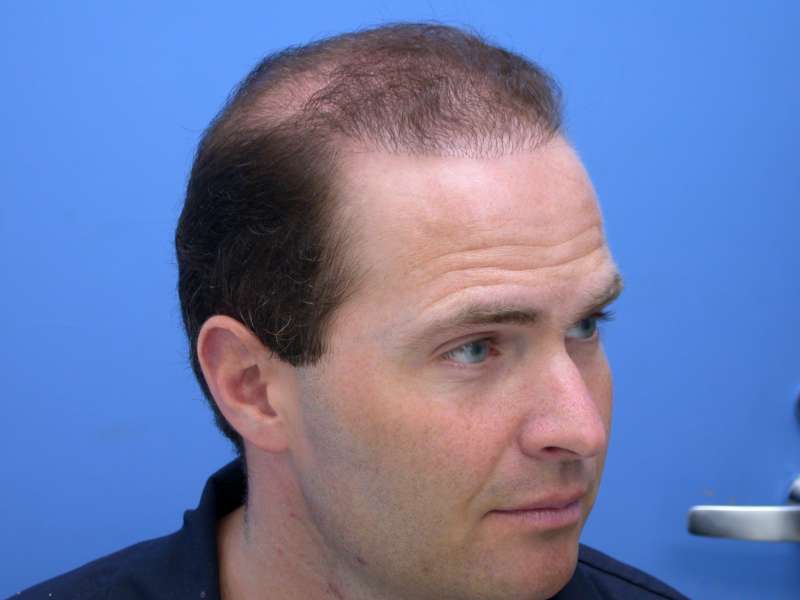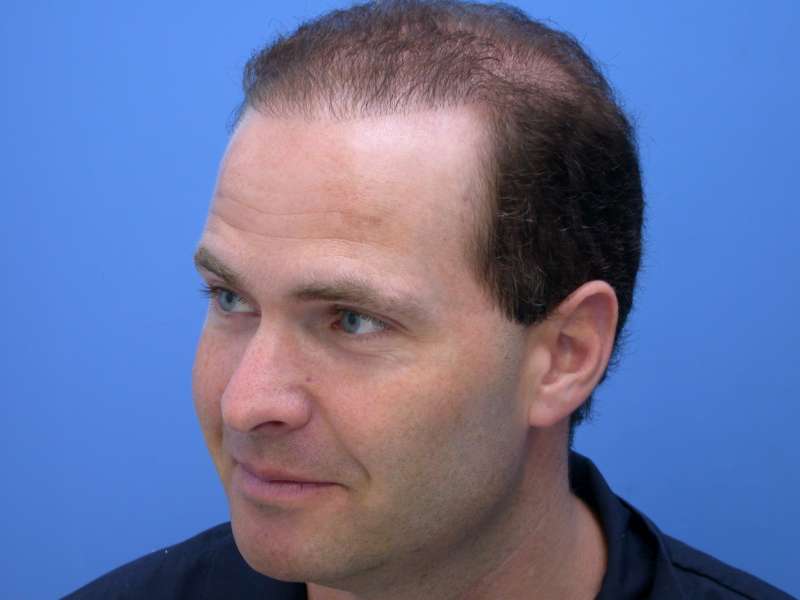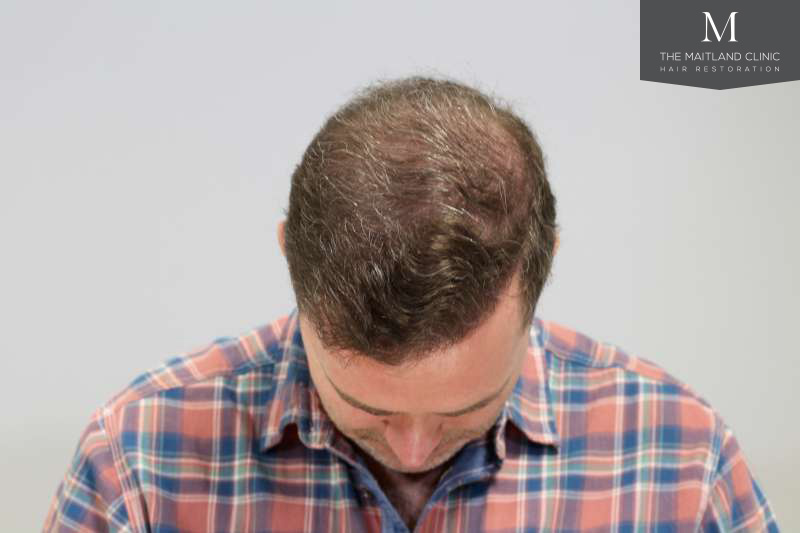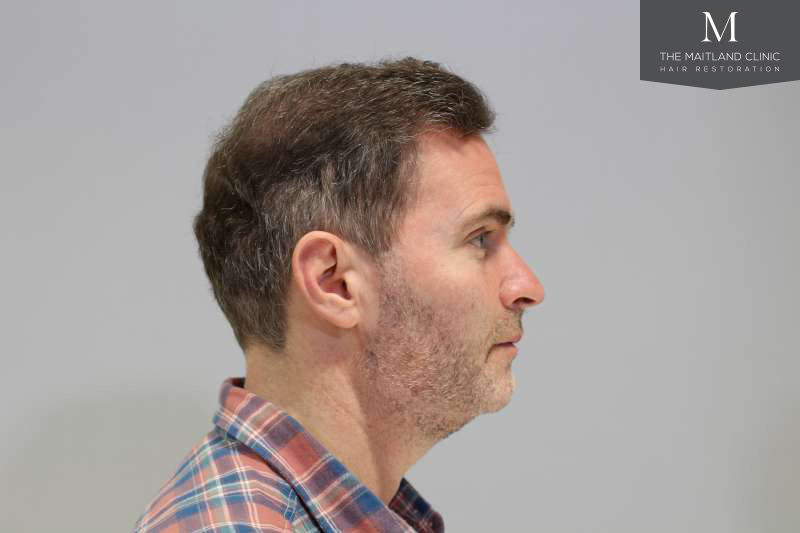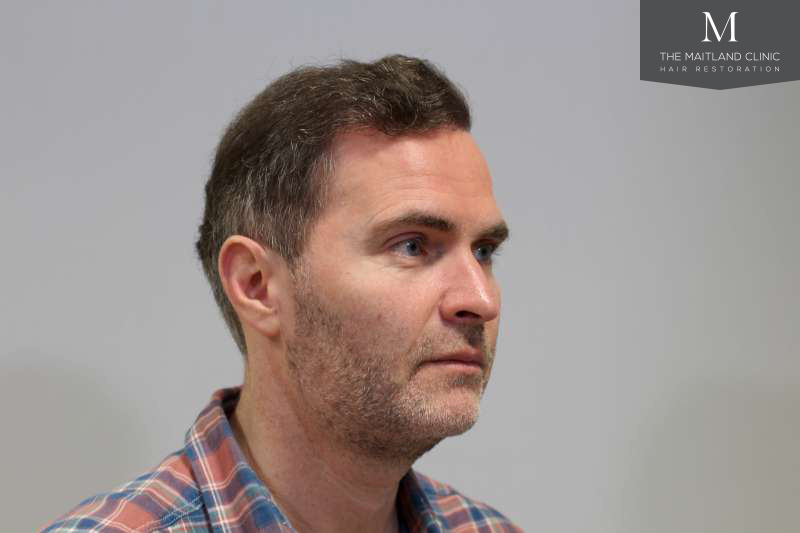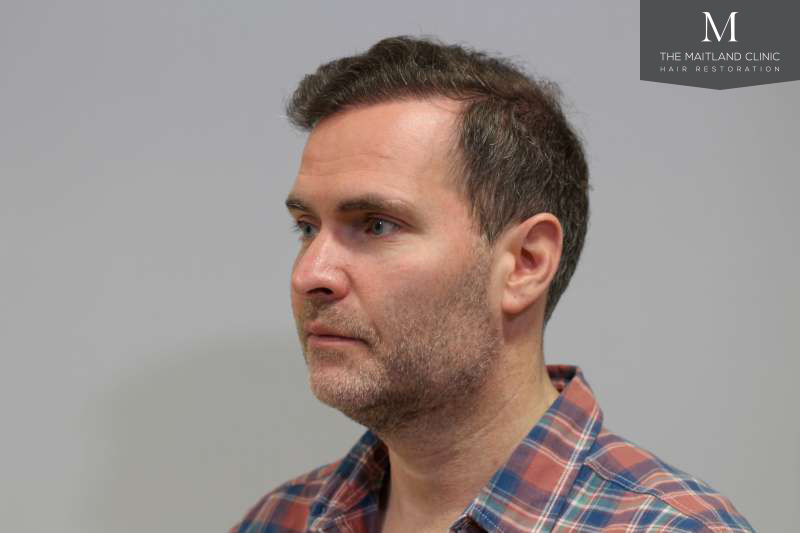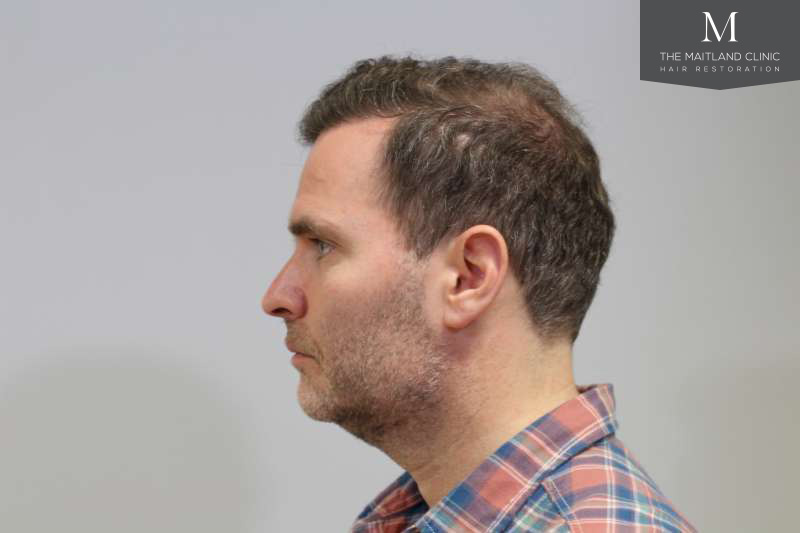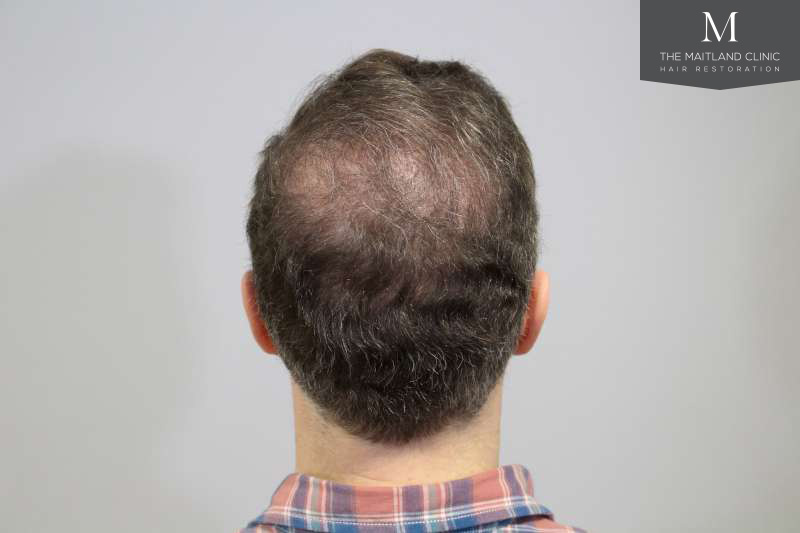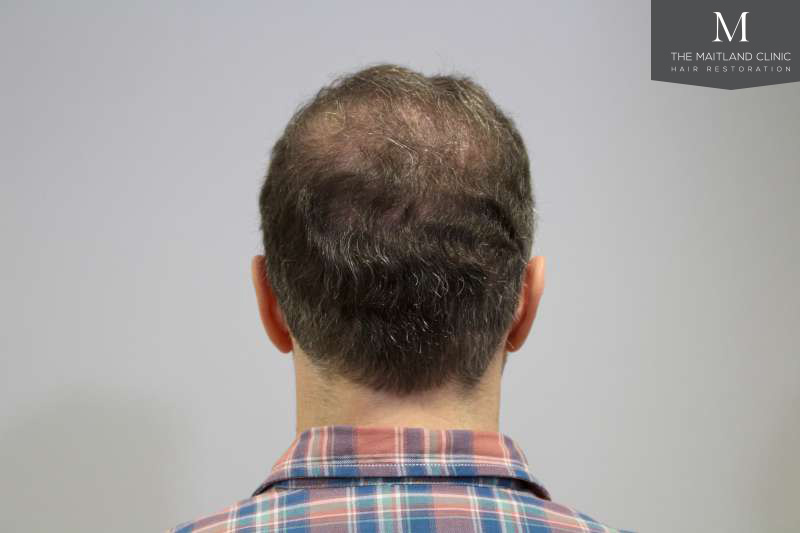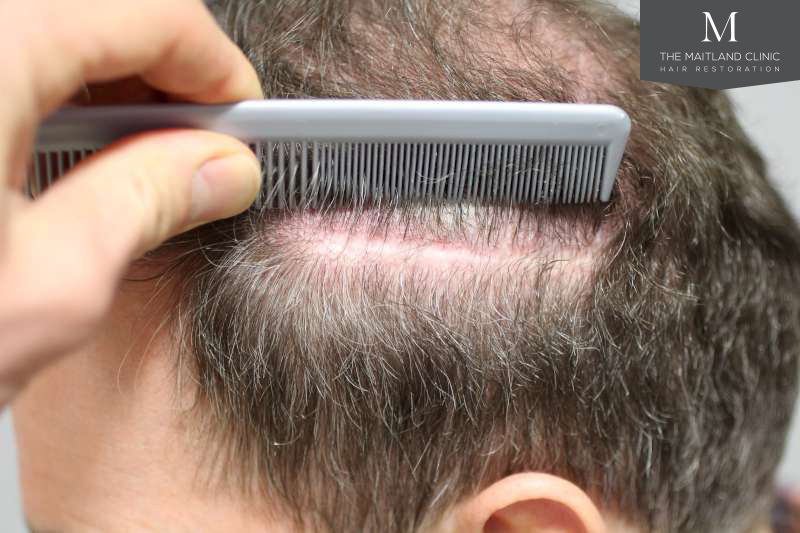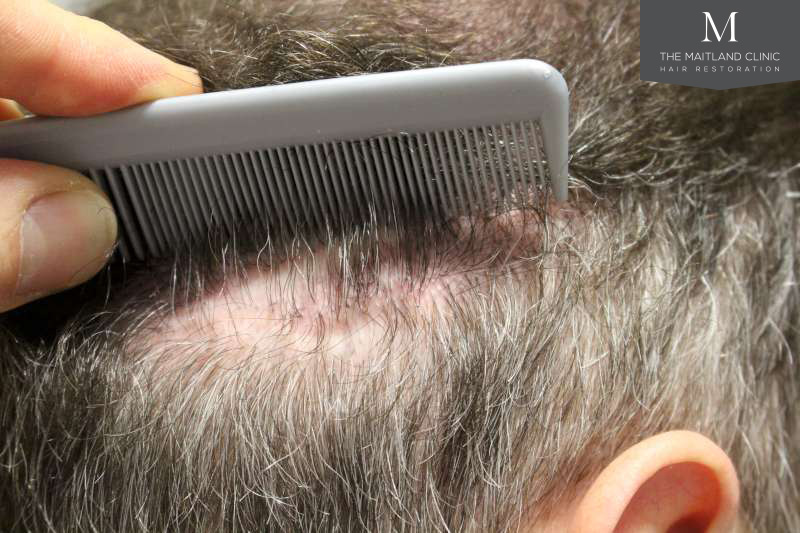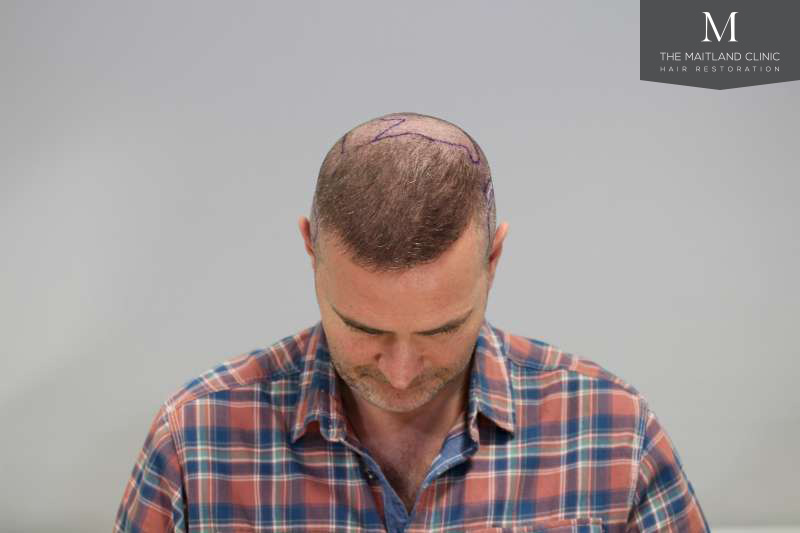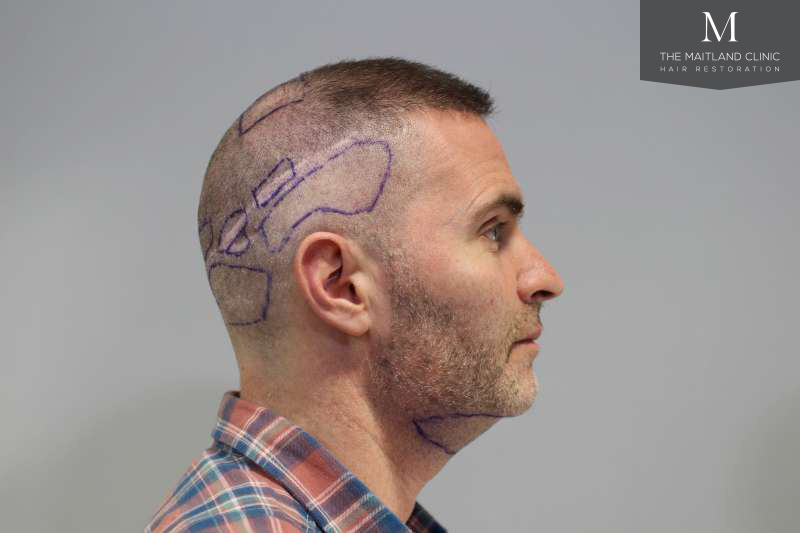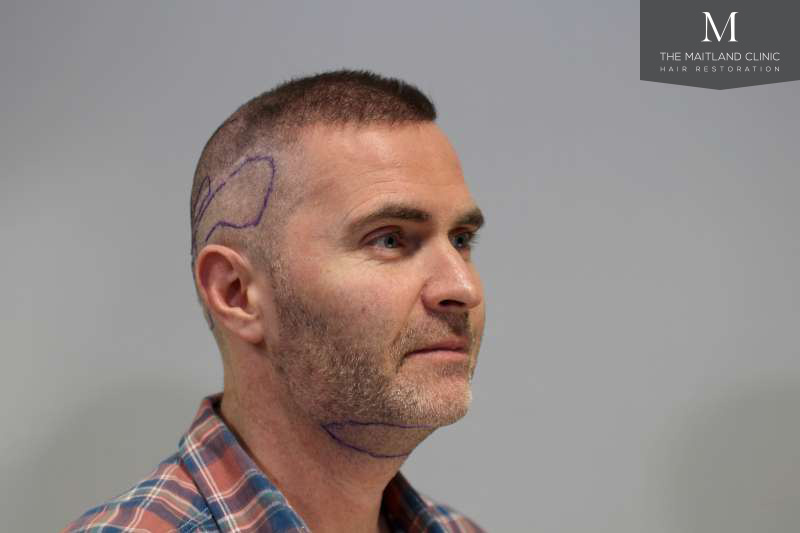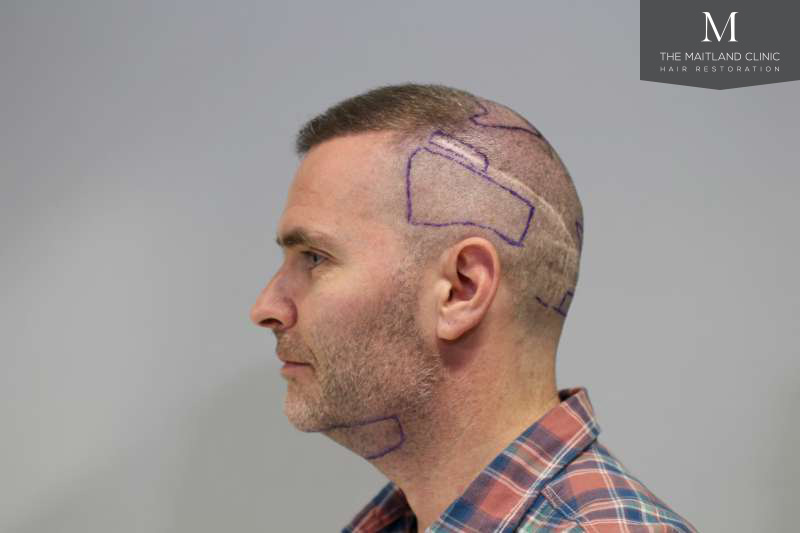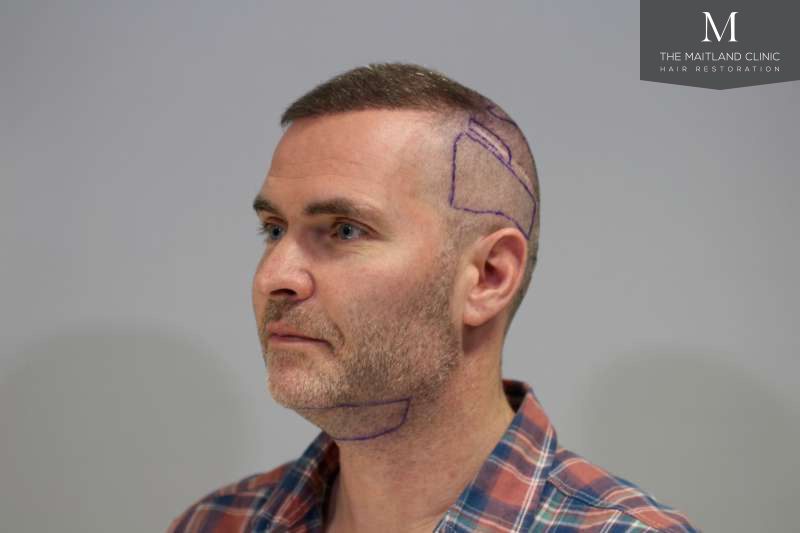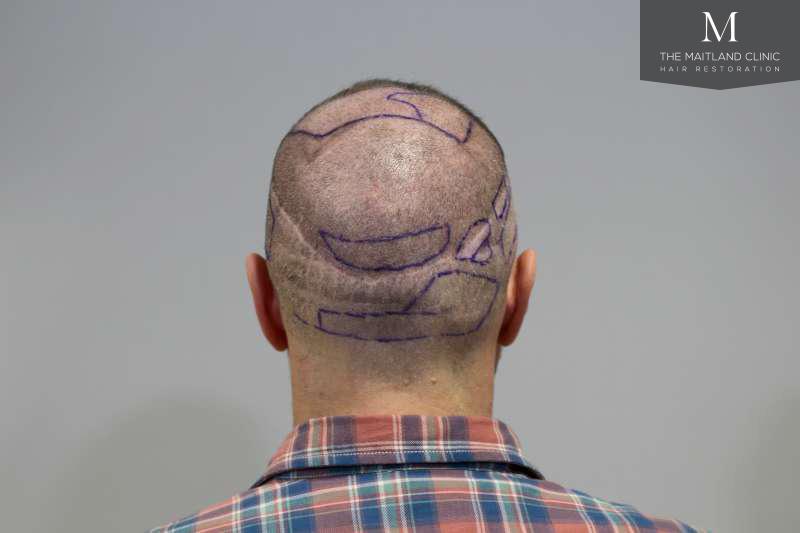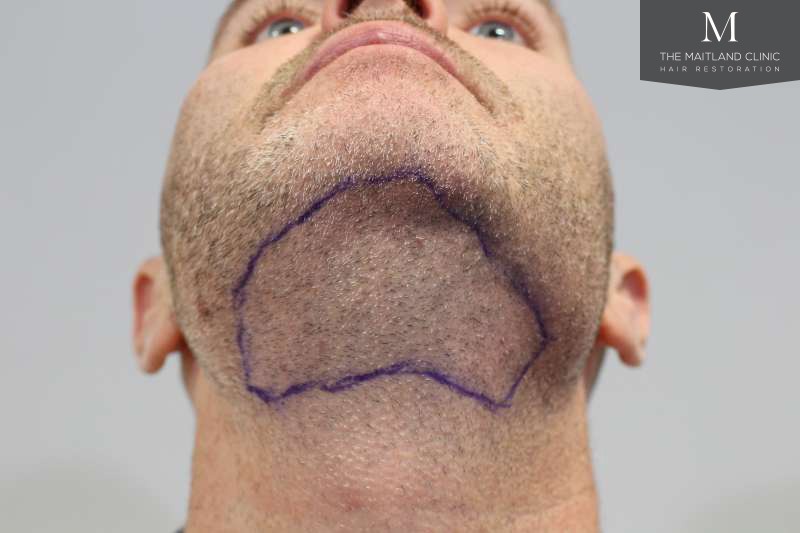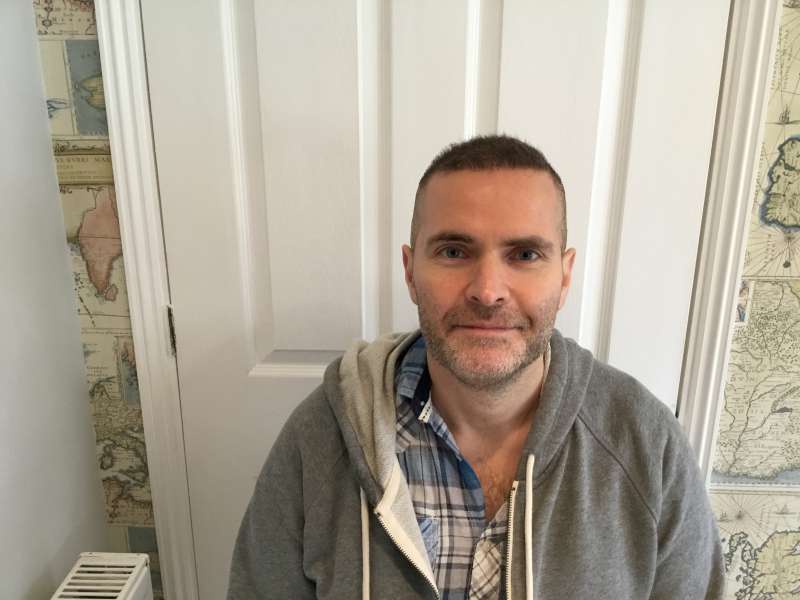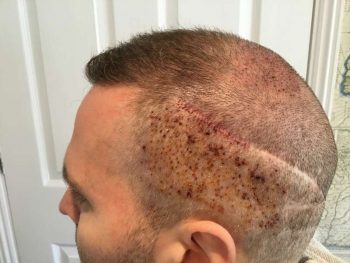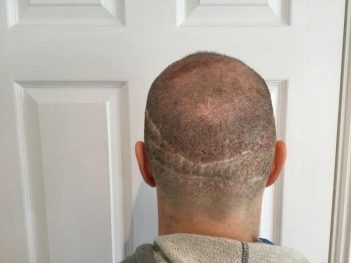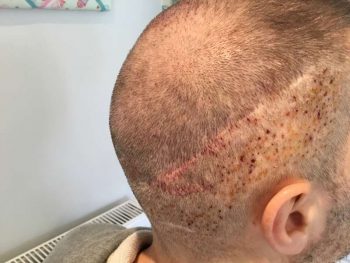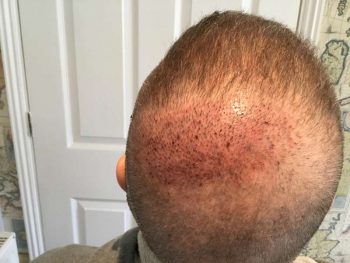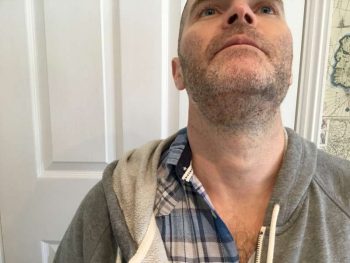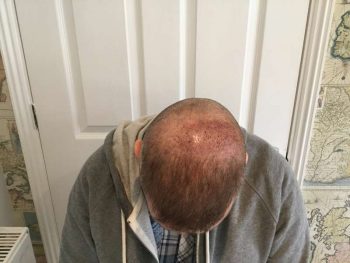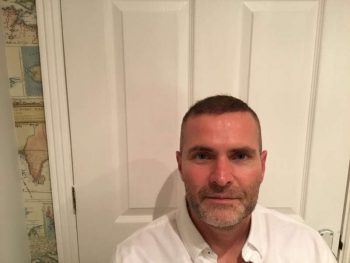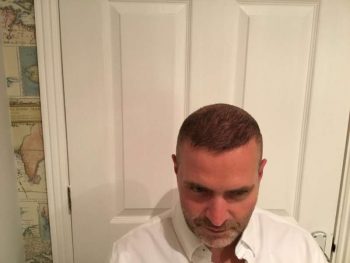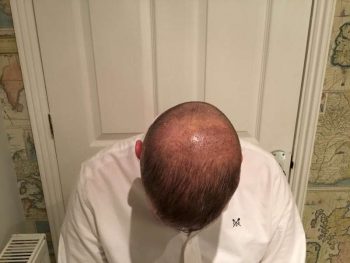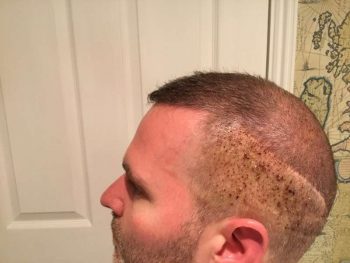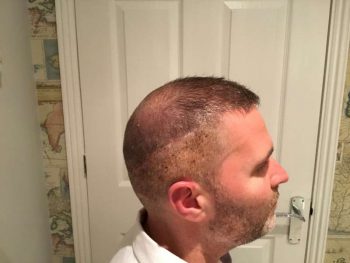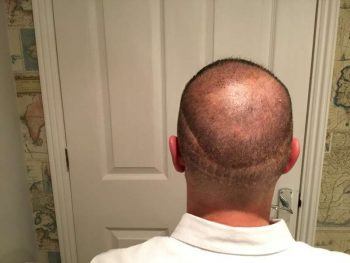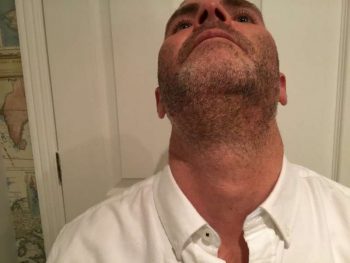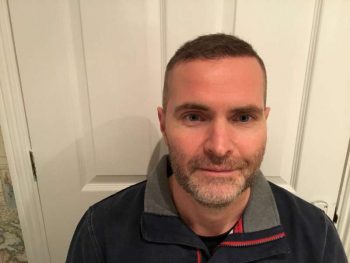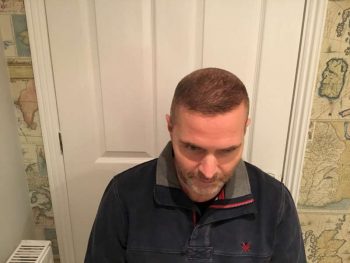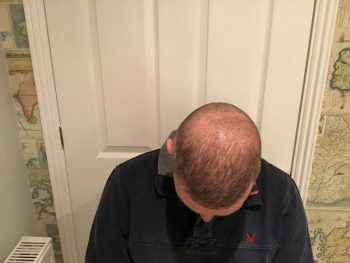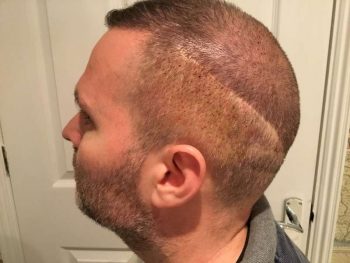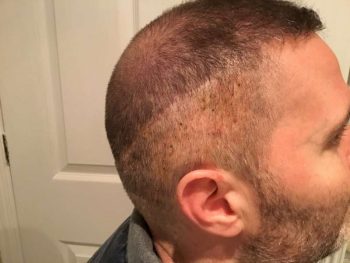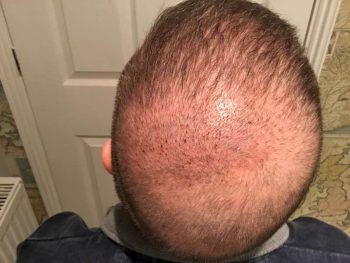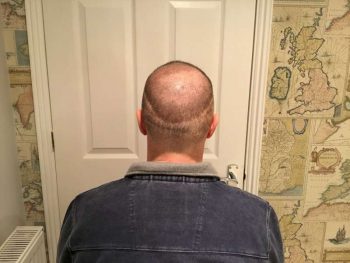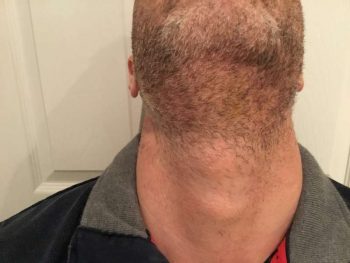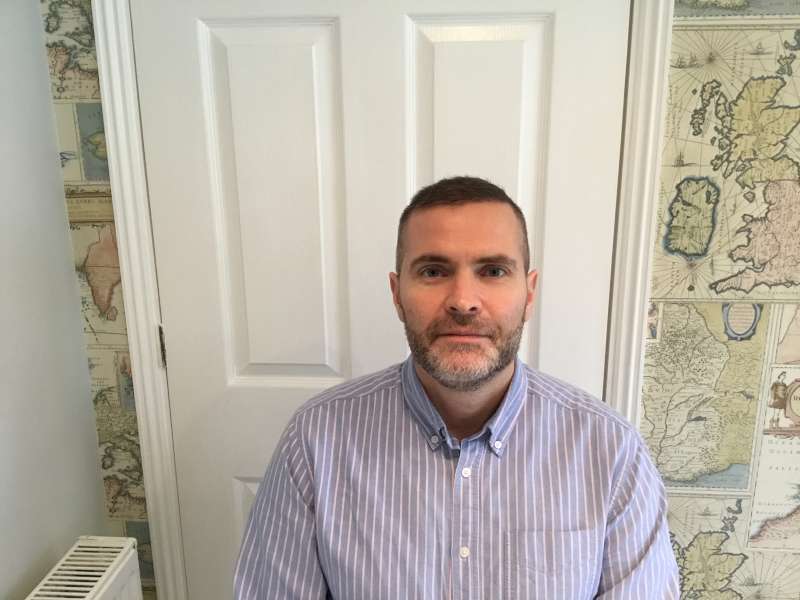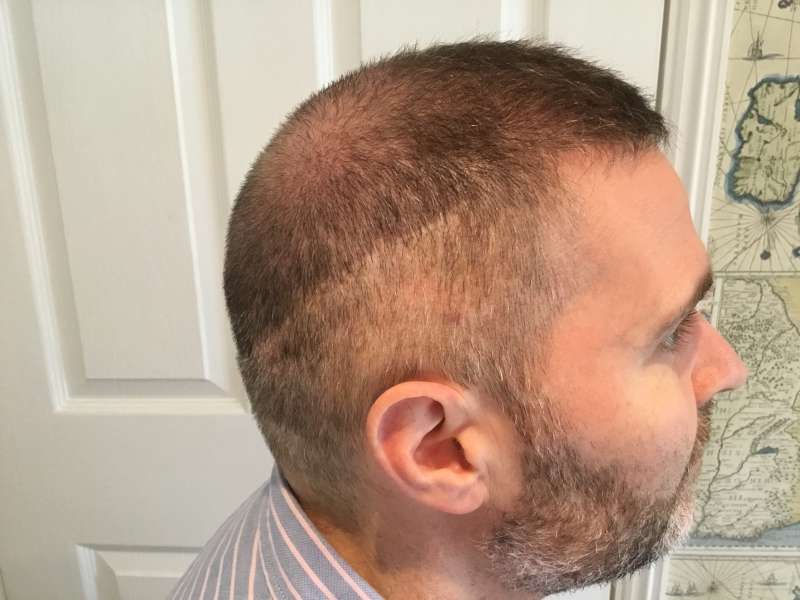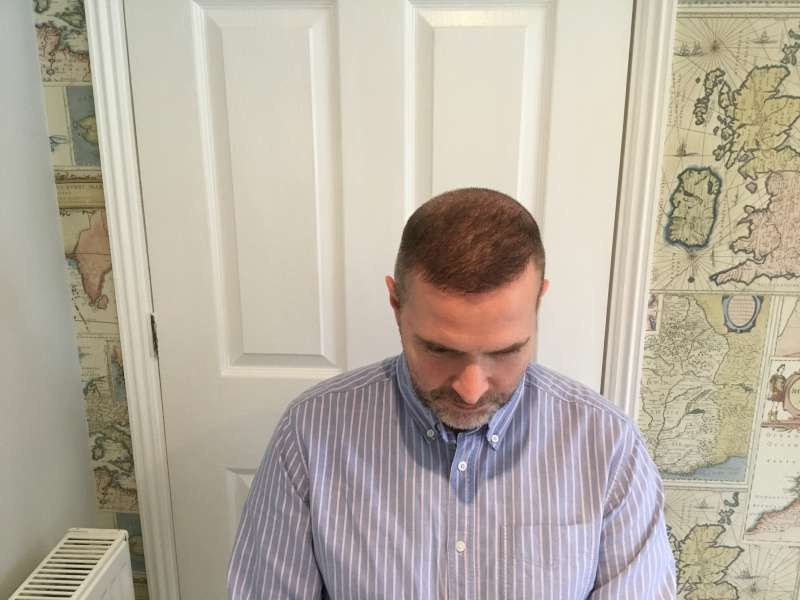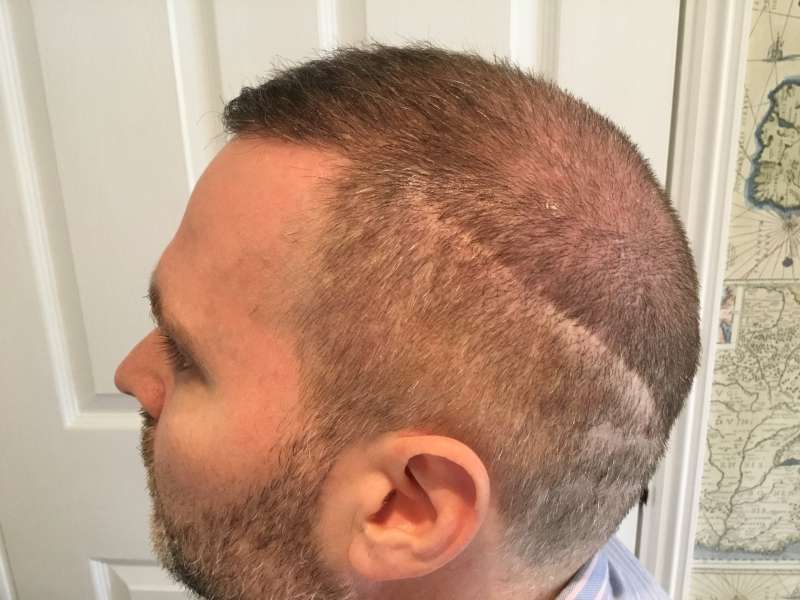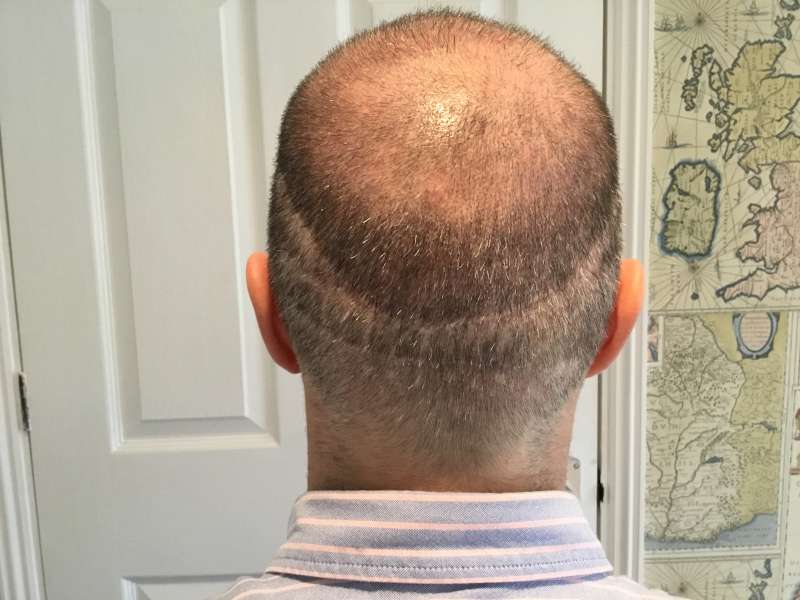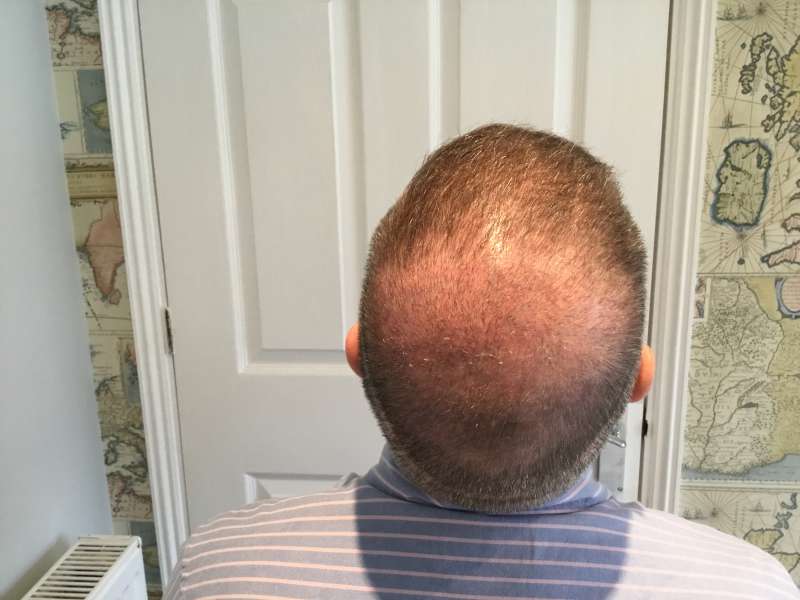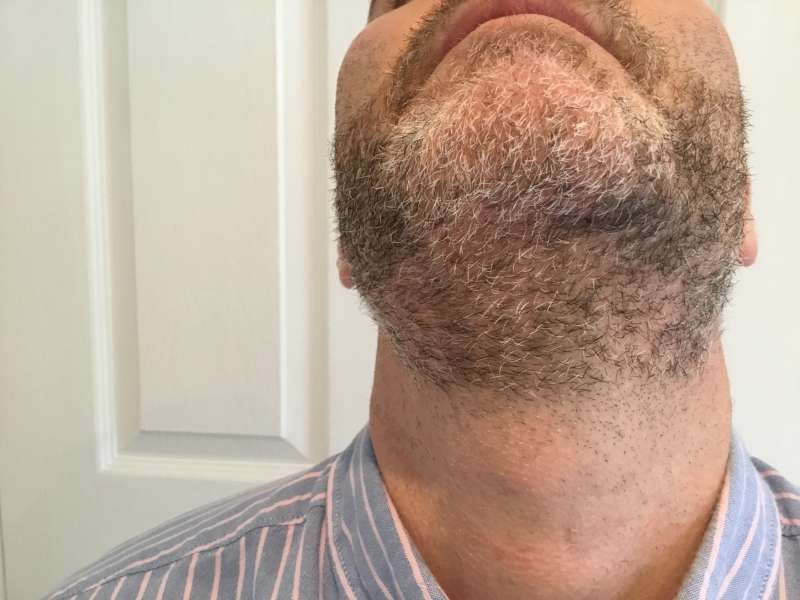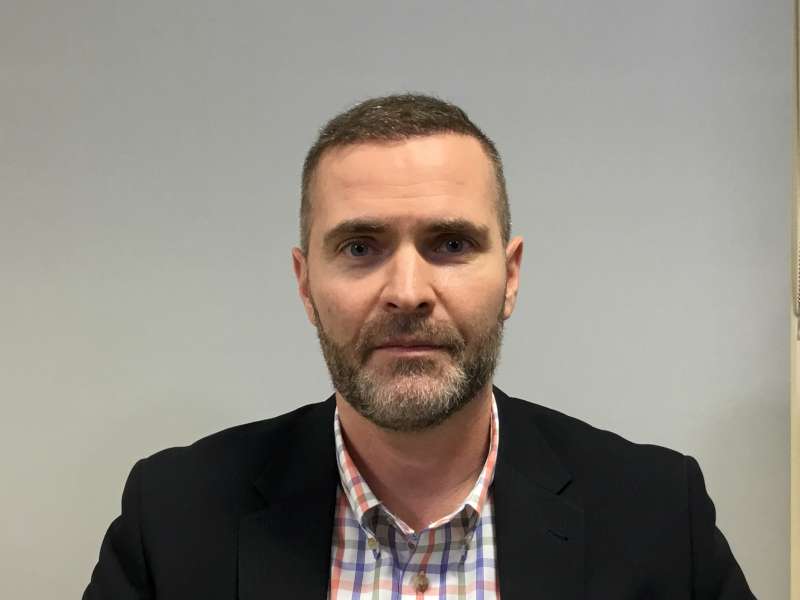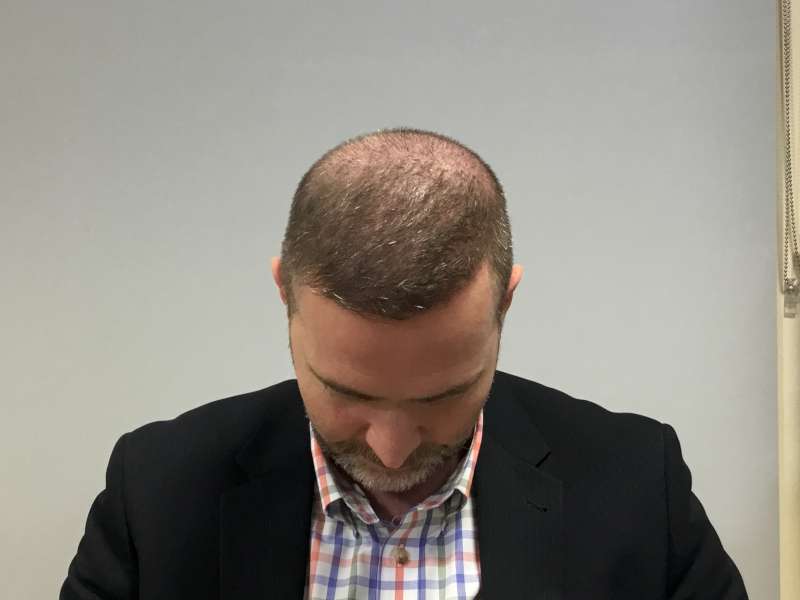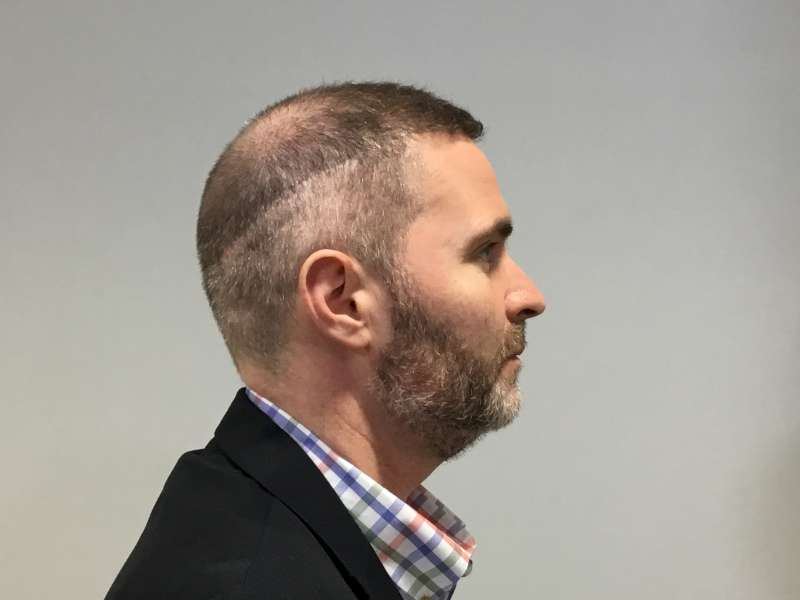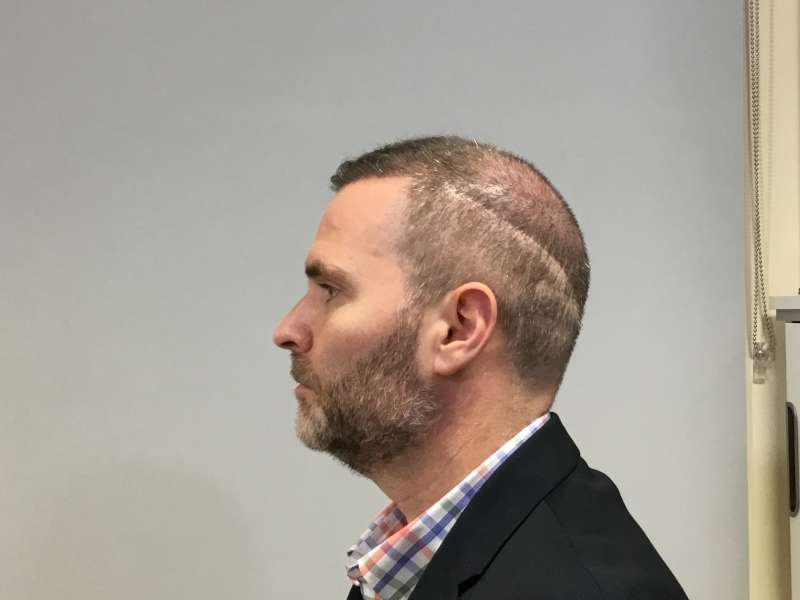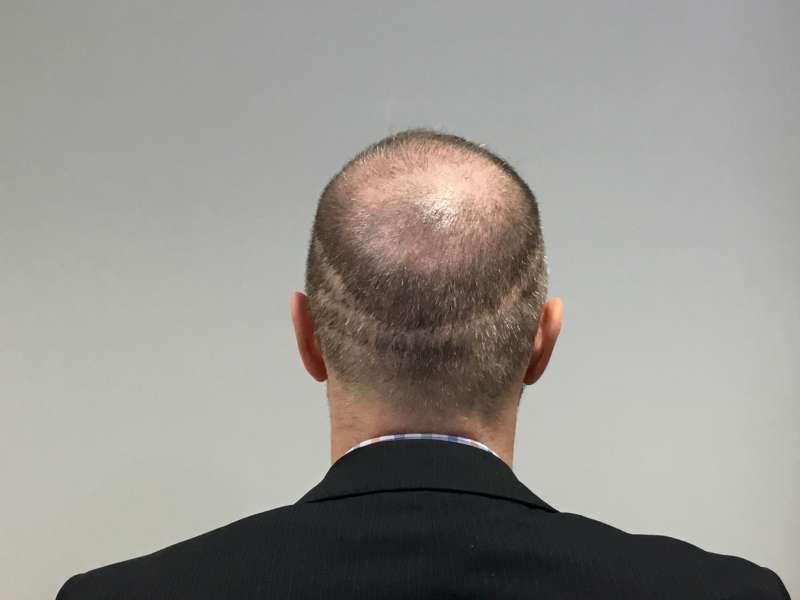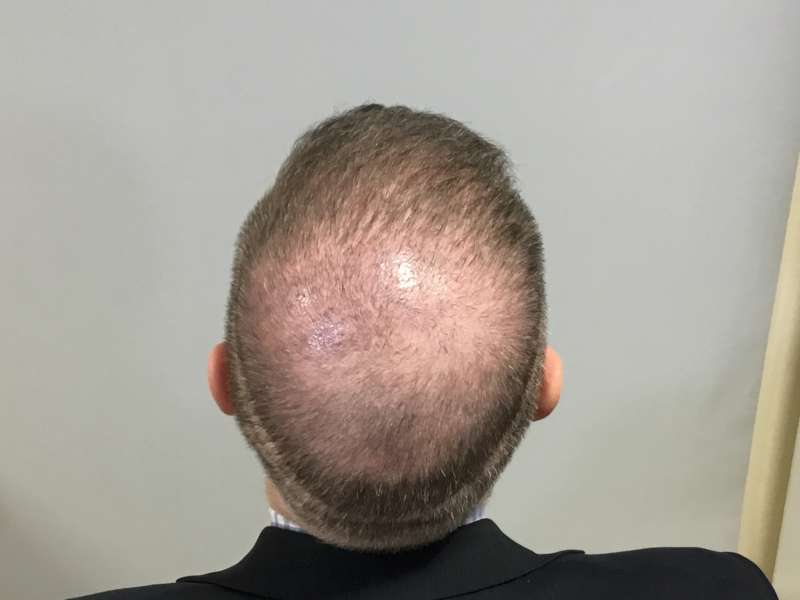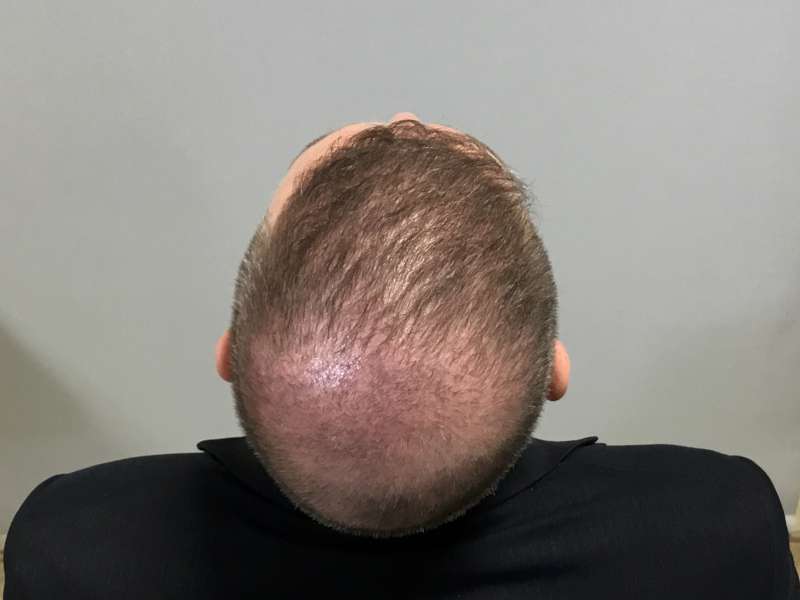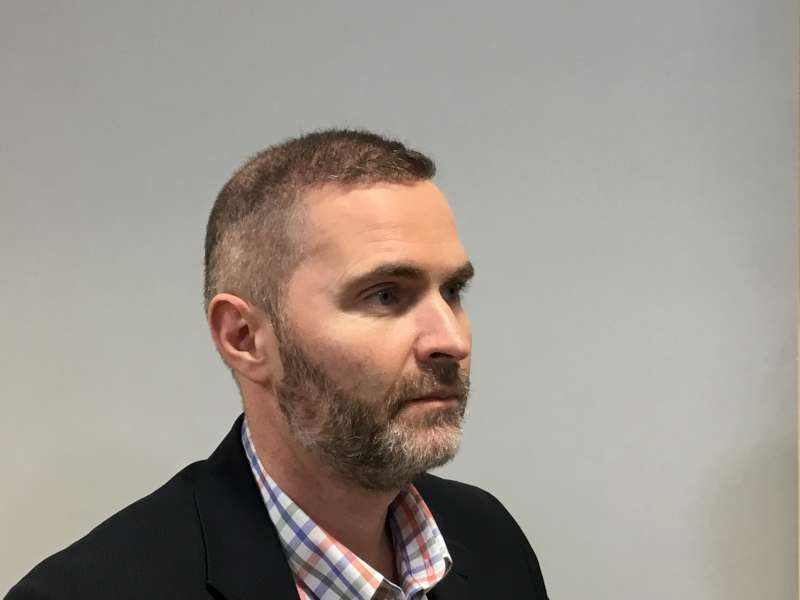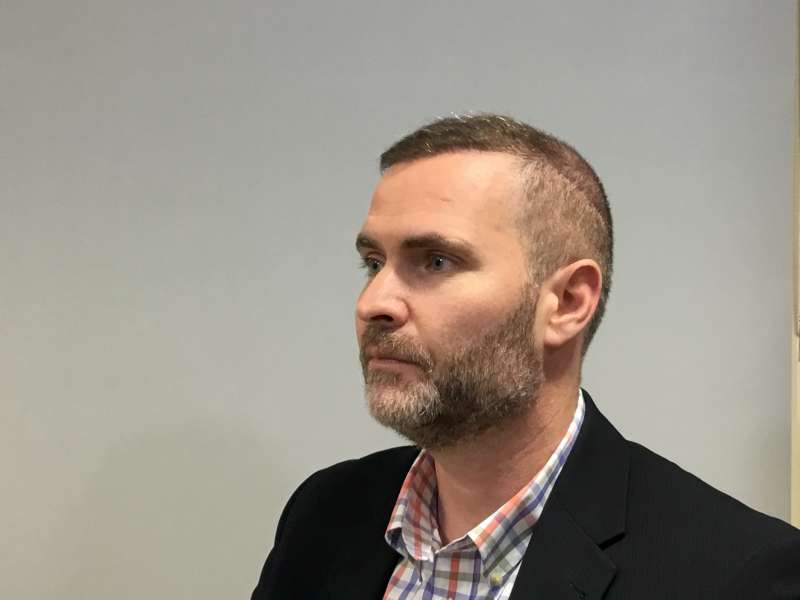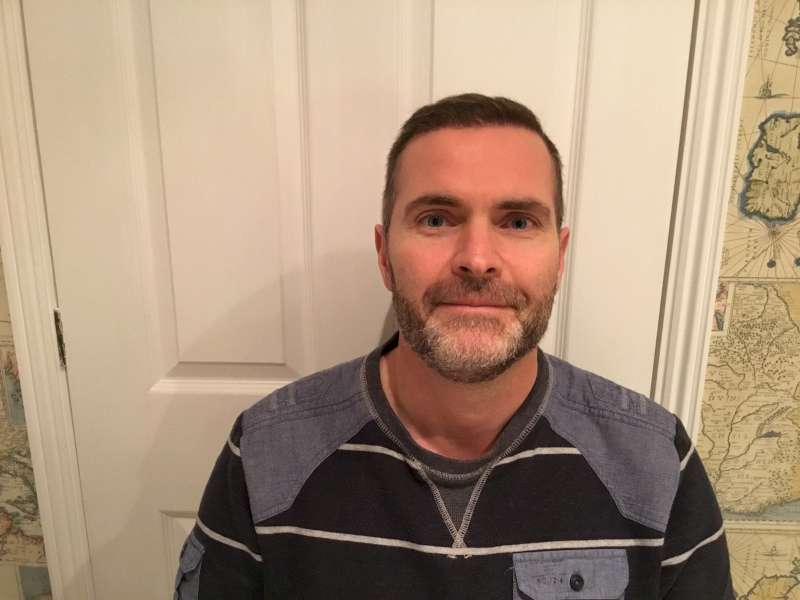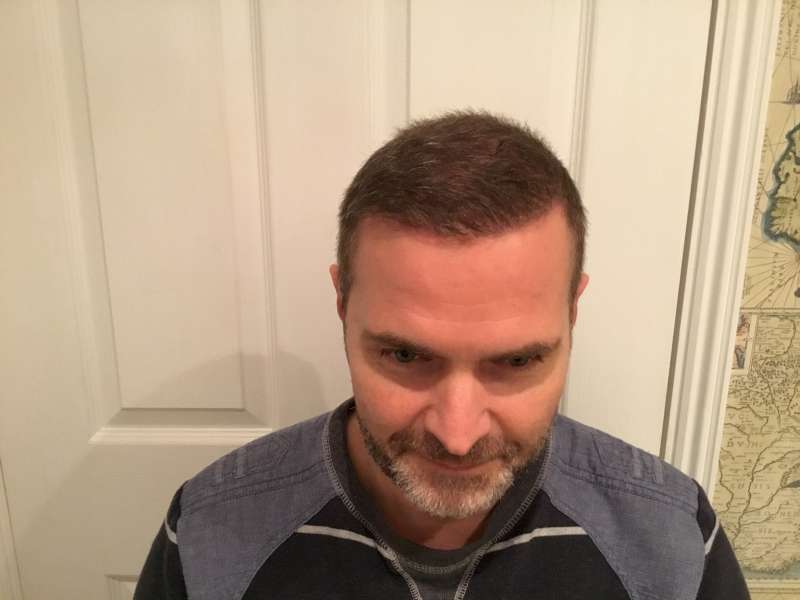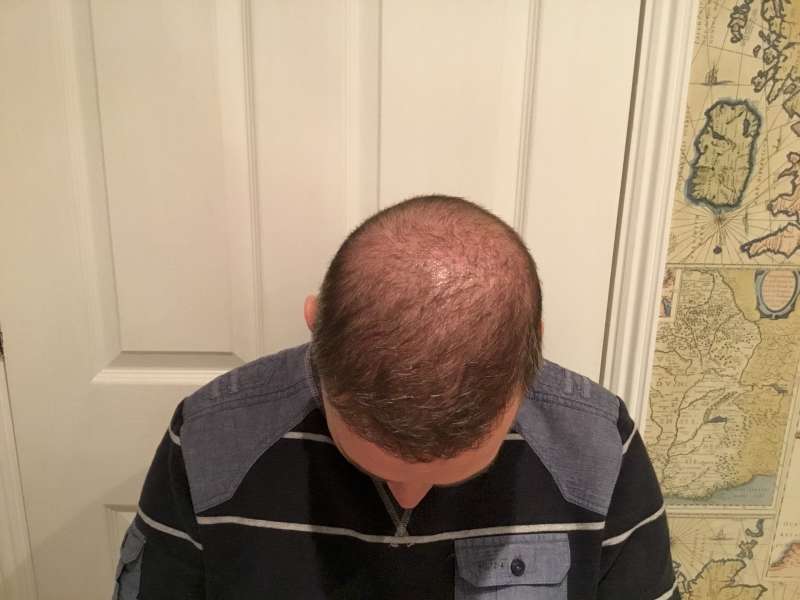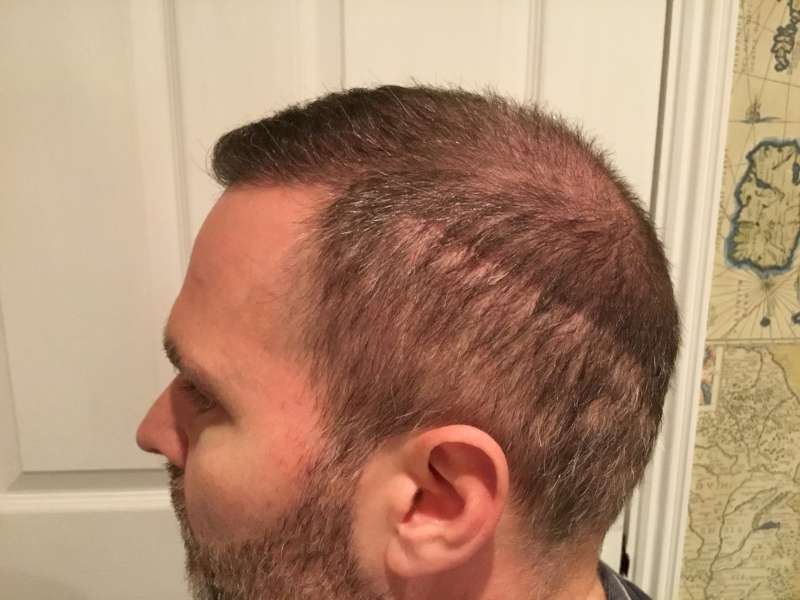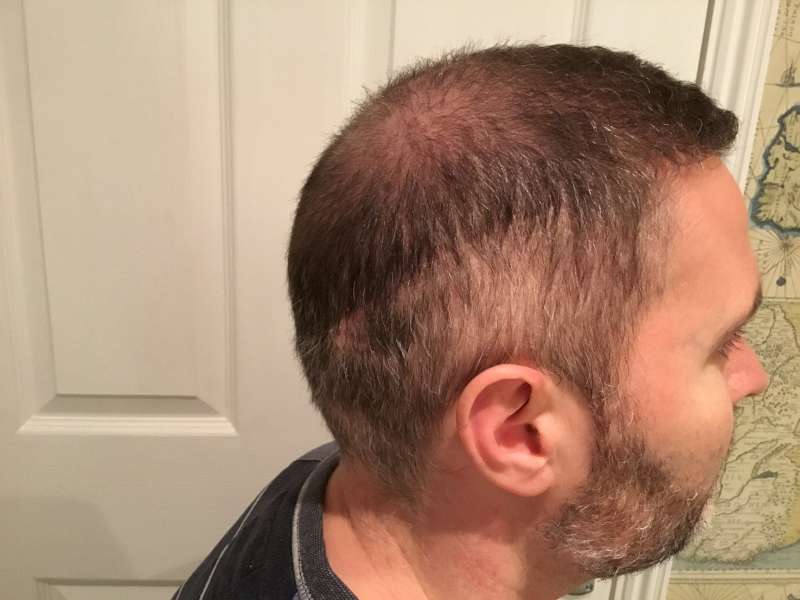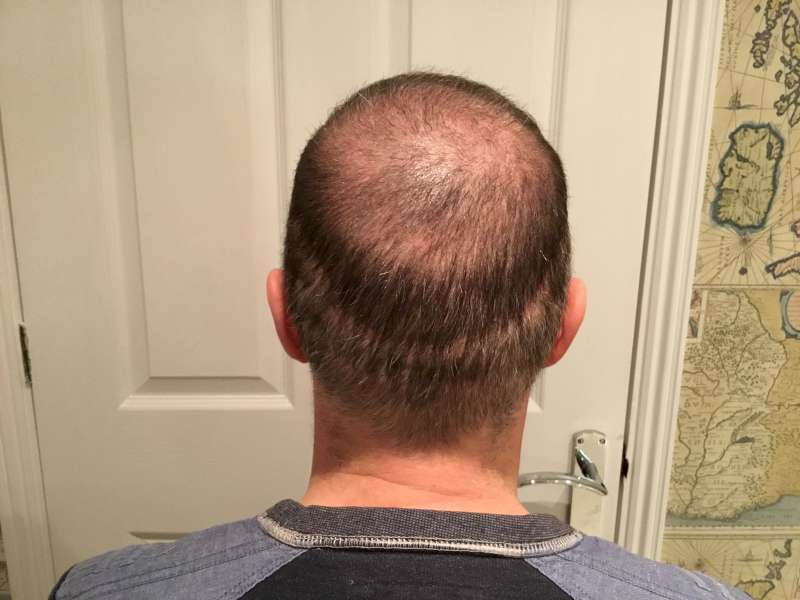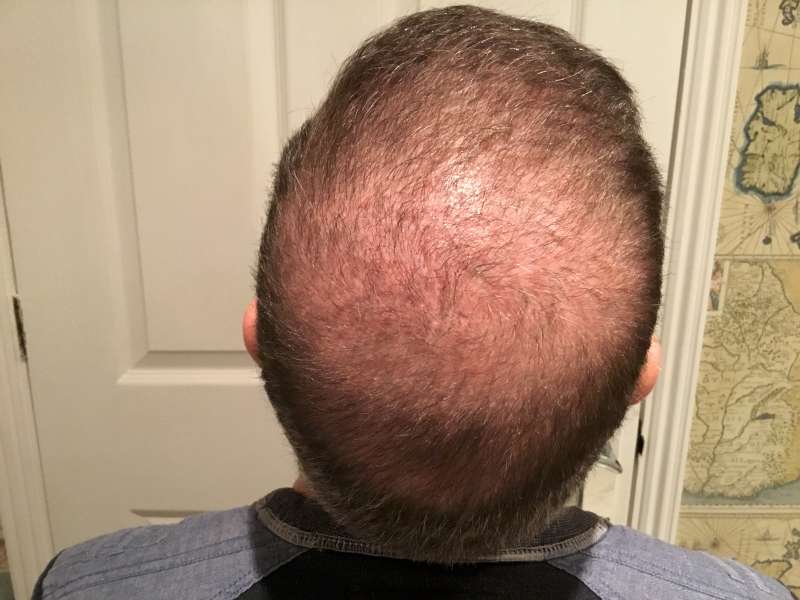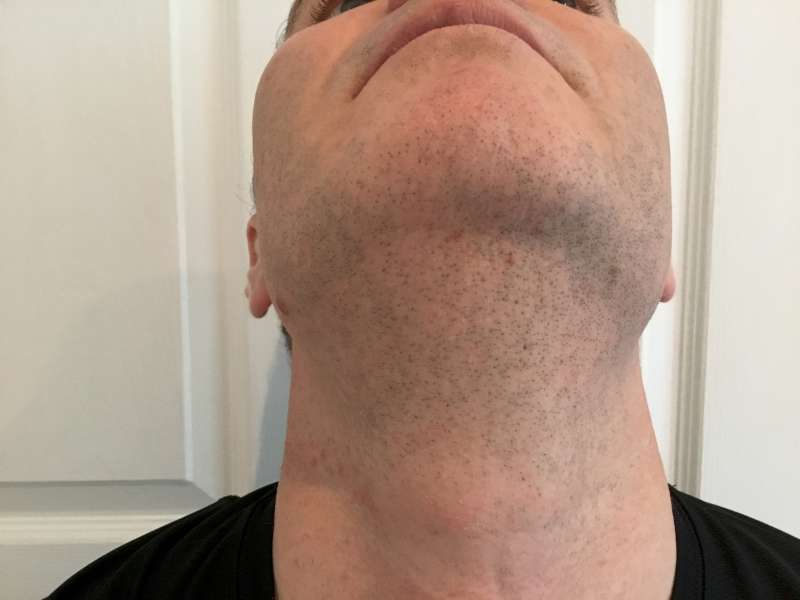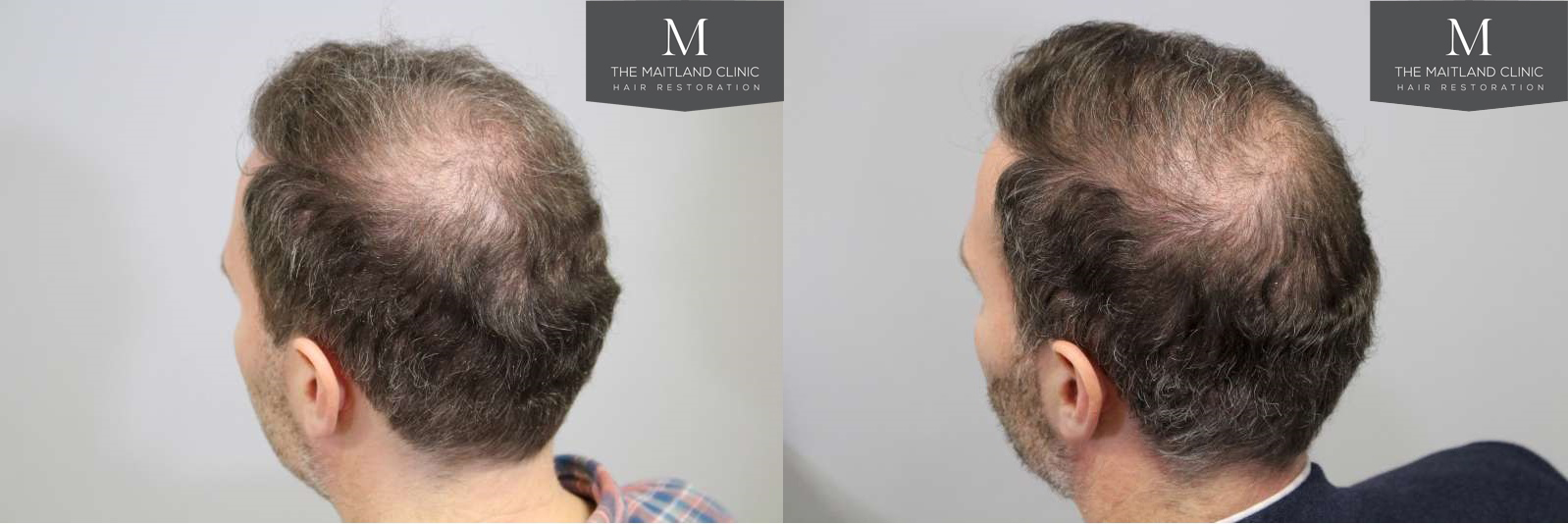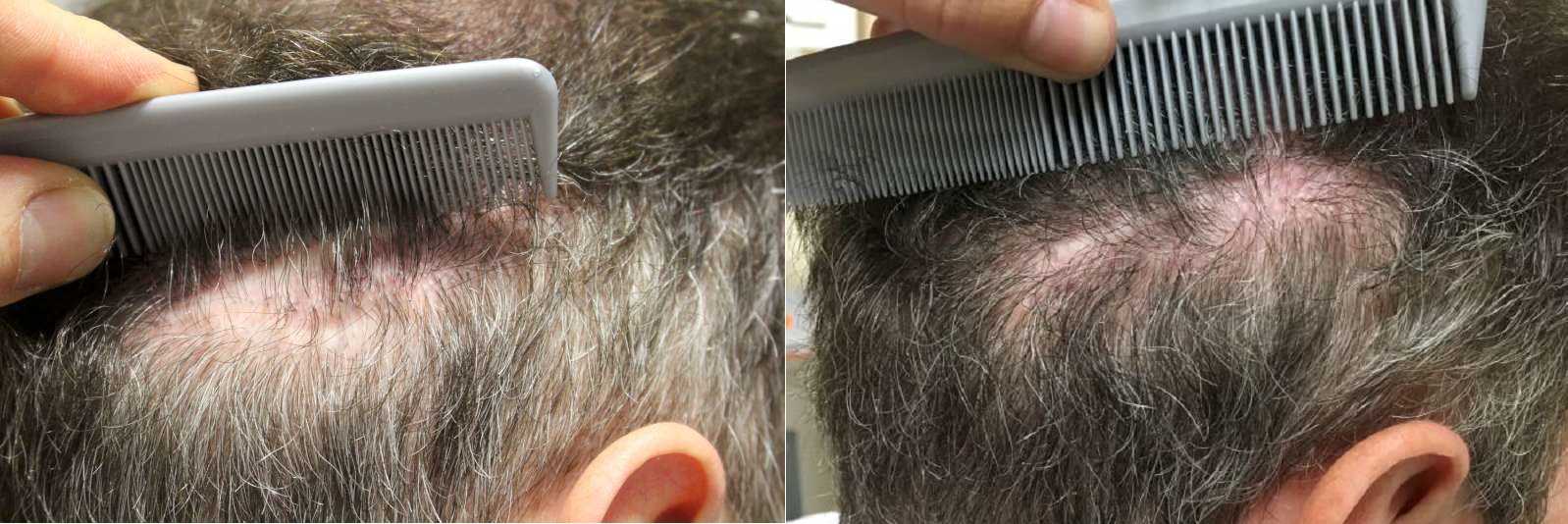My 7th Hair Transplant Surgery – FUE Scalp, Beard Hair, FUE Into Scar, PRP
16th February 2017
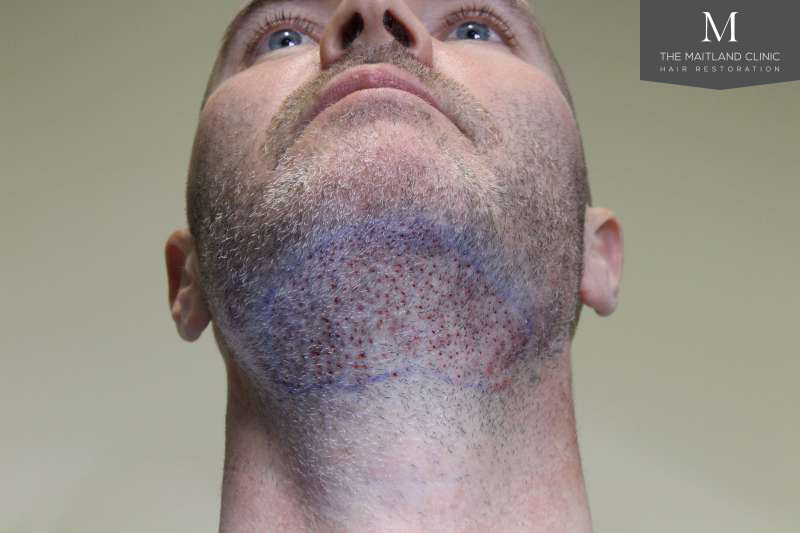
This is a blog on my most recent and 7th hair transplant which was carried out on Friday February 10th 2017. This was performed by Dr Edward Ball and assisted by Janna Shafer of The Maitland Clinic in Portsmouth, UK. It is my first surgery with Dr Ball for those that don’t know I work as the patient advisor for the clinic.
To recap, if you are not aware of my story I am 43, just turning 44. I noticed my hair loss around the age of 20 and was sent into a spiral of panic when it was confirmed and I burnt my head on holiday in 1994 age 21. I started to see a Trichologist locally at first and by his recommendation went on to have a hair transplant age 23 in the UK. This was into the frontal area by FUT/Strip followed by two further surgeries over the next two years with a different Doctor. In total these 3 surgeries yielded around 1000-1200 grafts although I have no faith that the number of grafts that I paid for were transplanted.
The third procedure was in 1998 and all were FUT. At the time it was typical to take a new strip each time resulting in three separate scars across my donor area. The pain from these surgeries was quite intense and after three consecutive years spending all my disposable income on transplants and hiding away for a week each time using my holiday entitlement I had decided enough was enough.
I was still losing my native hair as was not taking Propecia or applying Regaine to try to stabilize as I had been put off by the reported side effects. The three surgeries were like applying a sticking plaster as they did not solve the problem, only providing some temporary relief.
However, in 2001 as my native hair receded and thinned, the brutal reality of what I had done dawned on me. The pluggy looking transplanted hairline was visible and the resulting gaps where no transplanted hairs were placed became obvious, resulting in an unnatural hairline and balding pattern.
I had no desire to put myself through anymore surgery so braced myself for a miserable future, watching my hair fall out and the thick coarse hair groupings of the transplanted hair becoming more obvious. Shaving my head was not an option as I had 3 wide scars at the back and sides to hide. I went into quite a depression, marriage split, left my job and became quite a social outcast all because of how my hair looked. When your hair looks so bad you start to neglect other areas of your appearance and life.
A lifeline came in the form of how transplants had progressed overseas and through forums like hairlossexperiences I was able to follow the progress of other men who were in a similar position to me. This time around I did my due diligence and researched many clinics to find the best solution for my own situation. I decided on Hasson and Wong after finding Joe Tillman’s site hairtransplantmentor to be the most informative and similar to my own situation. In June 2006 I had my fourth hair transplant in total and first with Dr Hasson for 4856 grafts FUT.
After three surgeries in the 90’s
I started to document my story on the forums and my handle ‘Garageland’ was born. The first 4 months were so hard looking back. I had to shave my recipient area and leave the hair long at the sides and back. I had shock loss around the donor area but at 5 months it was all worth it. My results were nothing short of amazing and the feeling of seeing new hair growth come in month by month after watching it fall out for so long was such a great experience. In taking a fourth strip from the back of my head Dr Hasson had to work through some of the existing scarring this resulted in a wide patch developing on my right side mastoid area.
While the result was great as coverage had improved from front to back the scar was an issue and the hairline still needed refining. I was enjoying my new hair and made the most of making up for lost time as most of my twenties had been consumed and ruined by hair loss. At the end of 2009 I was approached by Joe Tillman then of Hasson & Wong to become their UK patient advisor. I had documented my results on all the forums from the start of my journey to the 2 year mark.
In 2010 I returned to have a scar revision (fifth surgery) to deal with the widened area of my scar and the resulting 623 single hairs were placed into my hairline to refine further. This made a considerable improvement to both areas and I was able to wear my hair shorter sides and back.
In 2013 I felt I would have would have one final surgery(sixth) with Dr Hasson as I wanted to thicken the crown as most of the grafts were placed into the frontal area in the past to soften the pluggy look. Dr Hasson persuaded me that because of the number of grafts that would be attainable this time (after 5 previous procedures) any grafts would be best placed into the frontal third of the scalp. I took his advice to do this. In order to get as many grafts as possible he took as wide a piece of tissue as possible and extended the scar further into the temples. The final graft count was 1755. The days following I had a one pass temporary SMP into the crown and donor scars with mixed success. The SMP into the crown looked incredible for 4 months and together with filling in the donor scars I was able to wear my hair quite short and give the appearance of density. I would have needed further passes to get the best results as it did fade quite quickly perhaps down to scarring in my crown from old surgery.
As for the donor scars, they had mixed outcomes and emphasised why you should always insist on a test patch when placing into scars as some can drop the pigment straight away and other’s can retain the pigment for a long period and the dots can spread. I experienced all of this in two of my old scars.
The results were again amazing and Dr Hasson was right to put some more grafts into the hairline and frontal area as it did look so dense front on. The problem was that the density in the front now made the crown look worse in contrast. I knew I would want one more surgery and that my next surgery would be FUE as my scalp laxity was not sufficient to harvest another strip.
I had heard of Dr Edward Ball from several patients of his that spoke highly of his work and him as a person. I had seen good work produced online and when speaking to other people in the industry I only heard excellent things mentioned.
When I found out that Dr Ball had set up The Maitland Clinic with Janna Shafer of Shapiro Medical I had to get in touch. Since working with Dr Ball, understanding his ethics and principles and the results of his work I have been so impressed and pleased that I made the move to work with him.
When a Doctor gets so many personal recommendations and returning patients you know just how good he is. I have learnt so much working so closely with Dr Ball seeing patients on a daily basis and watching surgery. Dr Ball understands what a natural hairline looks like and is able to draw a great hairline for patients in consultations that will suit them now and in the future. He understands the need to plan for the future and always has the patient’s best interests at heart. We often turn away potential patients who we believe would be happy with their results short-term, but who would not reap the rewards of a transplant as they aged. We want to ensure that every procedure completed at The Maitland Clinic is natural and appropriate for years to come.
Dr Ball’s insistence to only work with one patient per day and to extract all the FUE grafts himself set’s him apart from many that think more commercially. It was this and many other factors that made me decide four years, on from my last FUT, to have my first FUE surgery.
Why another surgery?
I have been taking Propecia for nearly 11 years now, first as Proscar and cutting it into quarters and taking daily and more recently name brand Propecia daily. I feel this has stopped my loss and most likely showed some of the improvement that I saw from my first repair in 2006. I have tended since that surgery to wear the hair with some length to provide the illusion of more density. Using the hair length to layer provides a really solid front and whilst there is a good covering of hair further back and into the crown, the density does not provide the same barrier of hair.
My main concerns since my last surgery in 2013 have been that; the density of hair is reduced further back and when wearing my hair longer it catches the wind and I am often patting it back into place. This is partly down to a lack of density, my hair type being wavy and coarse and also down to the way the old grafts from the Nineties stick up directly out of my scalp.
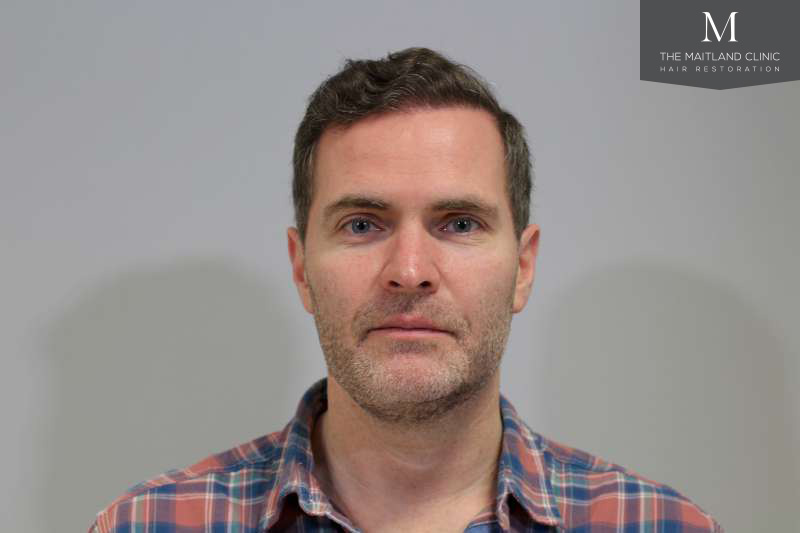
Before my latest surgery
The other issue I have is scarring and the need to wear the donor hair longer to cover numerous FUT scars. After seeing FUE first hand so many times I can see the appeal of no line scar and easier recovery post op. However my situation, as you will see from the photos, is different as I now had at least 3 donor scars in a Norwood 6 donor area. If I was to start my journey today I would still choose FUT but would have only one donor scar. Due to the amount of scarring I have I always have my hair cut with scissors rather than graded at the back and sides and return to the same barber who knows to leave it a little longer in the key areas that trouble me. Overall from my starting point these are small concerns and ones that I could and would have lived with. However having access and total confidence in Dr Ball’s FUE abilities I decided several months back to address these issues. I also wanted to, from a patient’s perspective, undergo an FUE procedure to report the recovery and have a comparison to FUT.
In some areas of my donor I also felt I had too much hair, this was helpful as FUE thins out the donor area in a uniform way which FUE does not. Due to a higher density both below and above my scars it seemed sensible to use this. I have also always had a good beard donor supply and wanted to see just how well it might cover my scars and add density into my crown. Finally as we have been using the Angel PRP system with some promising results I wanted to see how it might work for me.
I am blogging on YouTube my updates which you can find through this site but will continue to update this thread too.
The Procedure
First Dr Ball needed to mark the areas where he wanted to place and extract grafts from. This was drawn when the hair was long to be able to assess better density. The area was then shaved down by Dr Ball. With FUE the donor area needs to be shaved to a grade 0 to extract the grafts. As I had a good deal of existing hair in the crown Dr Ball wanted to shave this area to place the grafts and get among the native hair. He did a pretty good job in terms of fading the front to the back so I have a few weeks head start for growth at the front.
I want to make a point here about my existing scars. Most of my first scar that was on the right side of my scalp was cut away in the first repair by Dr Hasson in 2006. I was shocked to see how the scarring looked but expected it. What I was not expecting however was to see the train tracks of the lowest scar, which was done by my second surgeon using dissolvable sutures, what a mess he created, with not just the scar but the damage to the hairs above and below with the stitching. I have to give full disclosure that in 2006 I asked Dr Hasson to get as many grafts as possible and that the scarring was a secondary concern to me as I felt I would never be able to wear my hair short.
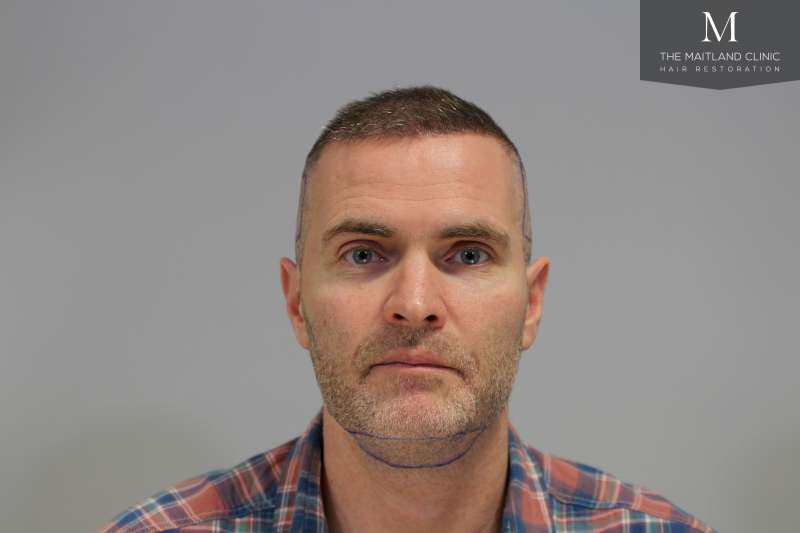
Donor and recipient area shaved and areas for extraction and implantation drawn
PRP- Platelet Rich Plasma
We have carried out a very small trial with PRP using the Angel system over the last 6 months. In most cases patients have reported an improvement in the hair quality. Therefore I was excited to see if PRP might show any improvements to the lower part of my crown. This is not an area where I have had any surgery before and whilst the hair is miniaturized it has been kept alive with Propecia over the last 11 years.
Dr Ball drew 100ml of blood and that was then spun in the Angel system centrifuge this separates the red blood cells from the PRP
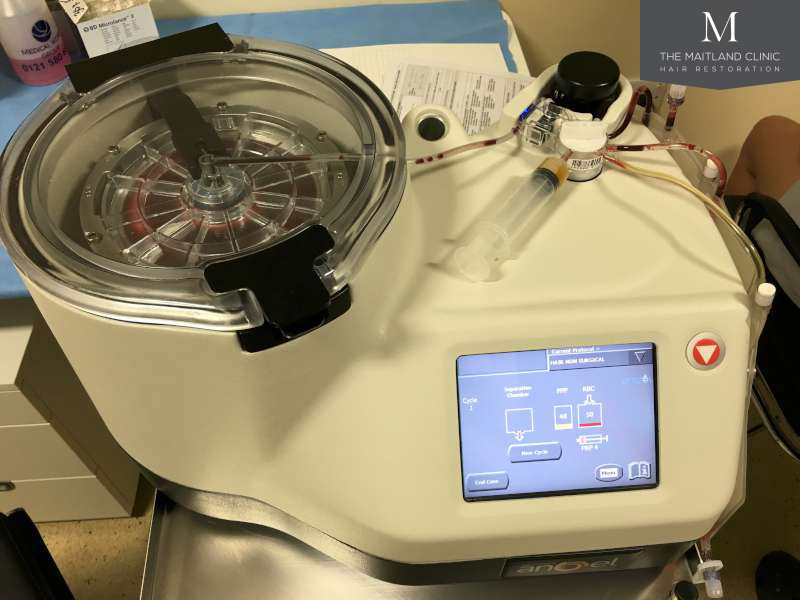
Angel PRP (not taken on the same day as my surgery)
From the blood taken, using the Angel machine, we obtained 2ml of PRP which was then, after numbing, injected into three areas. The first, as mentioned, into the lower part of my crown. The second, into the upper part of my crown, where grafts were placed in this surgery, and the third, into the V shaped scar area on the right side mastoid of my donor.
Once a small test session was carried out on both the donor hair and the beard hair for extractions Dr Ball started on the scalp hair extractions. Around 10 or so injections of anesthetic to numb the donor area were required in total. Many patients ask for an estimation of how painful surgery is, Dr Ball also asked me throughout the procedure to number my pain on a scale of 1 – 10. I found that my pain threshold ranged from a 1-2 up to a 6 – 7 at some moments, a vibration tool was used on the donor area to distract from the pain, which is a very helpful method and does make all the difference.
Dr Ball decided that a .9 mm punch would be needed in my case and proceeded to make the extractions using a handheld motorized punch controlled by the Devroye WAW foot pedal, which is pretty cool. Keen not to over-harvest my donor area, leaving my scars more difficult to cover, the session was never going to be a large one. The extraction process is painless and I can only relate the sensation to the noise an electric toothbrush makes, it was just a mild vibration I could feel.
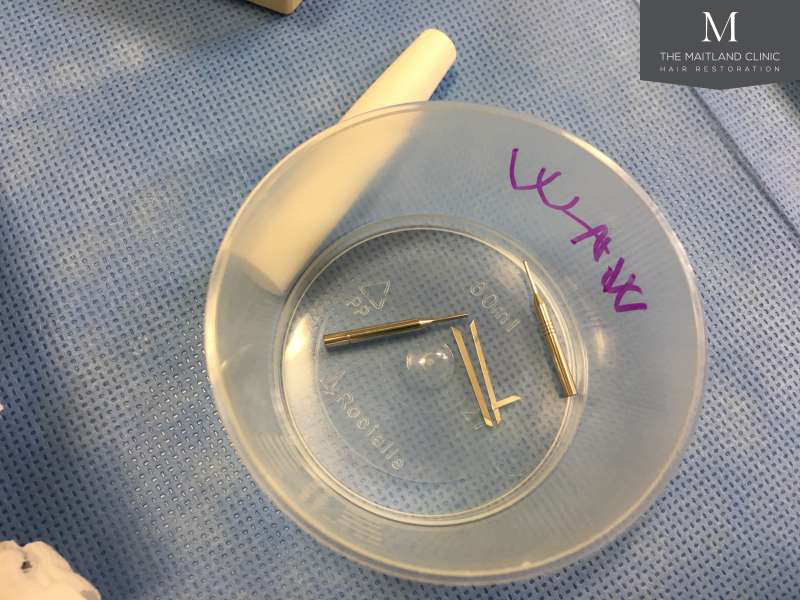
FUE Punches
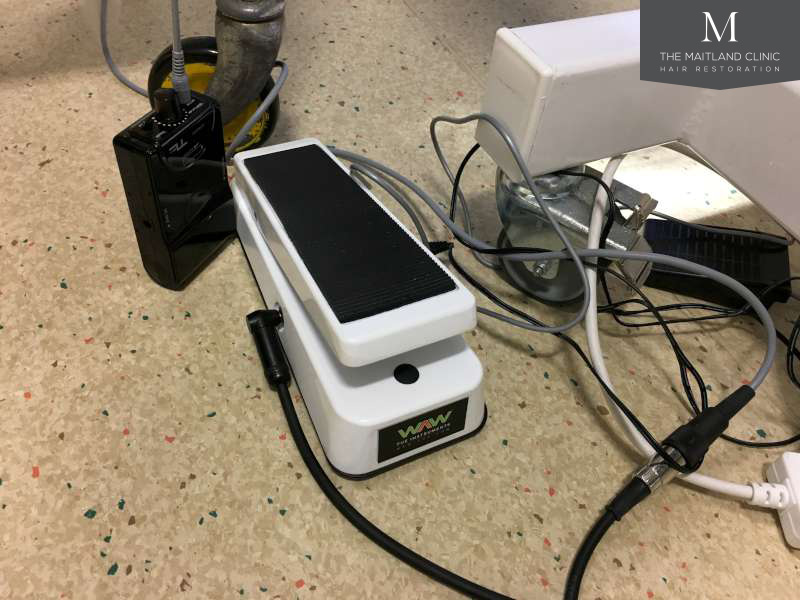
WAW Pedal
I was told in the past after looking at my grafts within the strip that I had splayed grafts and that FUE would be a challenge in my case. Splayed grafts are one of the biggest challenges with FUE. As the technique is semi blind you have no certainty of what the hairs are doing under the skin. In my case Dr Ball went shallower with the punch to accommodate this splaying. Thankfully my grafts were not that tethered to the surrounding tissue and were easy to remove.
I had a high number of multi hair grafts which would explain for how thick my hair used to look. However, the density of hair is not that high as I have above average texture but the groupings were good, resulting in higher hair count per graft.
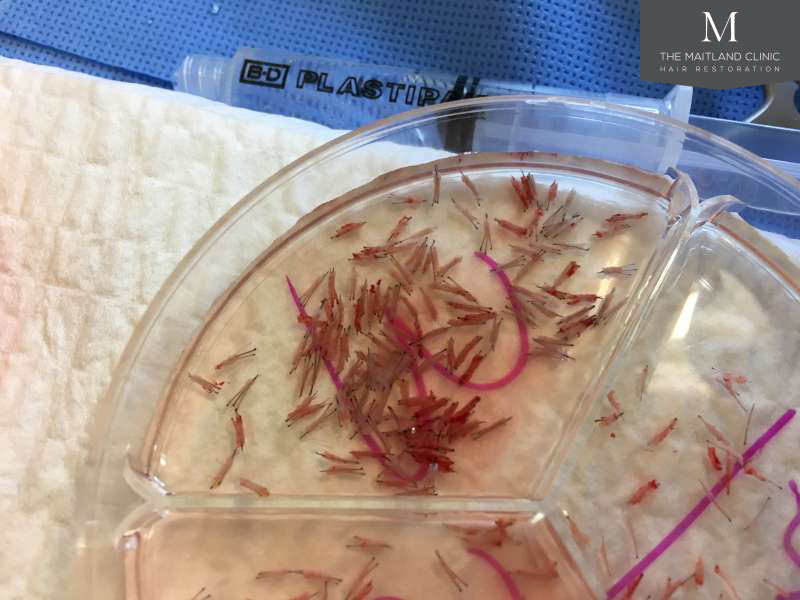
My scalp hair grafts
Dr Ball harvested grafts from the sides of scalp below the donor scars, from above the highest donor scar at the back and also below the lowest scar near the nape.
In total 653 scalp hairs were harvested and placed into a dish in the corresponding section for 1-2 and 3 haired grafts. The grafts are secured stored in chilled HypoThermosol while waiting to be implanted. The plan was to use these grafts in the upper section of my crown on my left hand side to radiate growth from the left to the right side. Dr Ball only wanted scalp hairs in this area as he felt that beard hair would look too coarse among the finer hairs.
More injections into the crown were made to numb this area for the recipient area incisions and the pain was similar to the donor area injections. Dr Ball uses a flat blade to make incisions and in my case used a 1mm blade size. The benefit of FUE is that you know how many grafts have been extracted so you know the number of incisions you need to make and can plan coverage and placement easier as a result. At the same time the donor was numbed again where needed and incisions were made into the parts of the donor scars that we were going to treat.
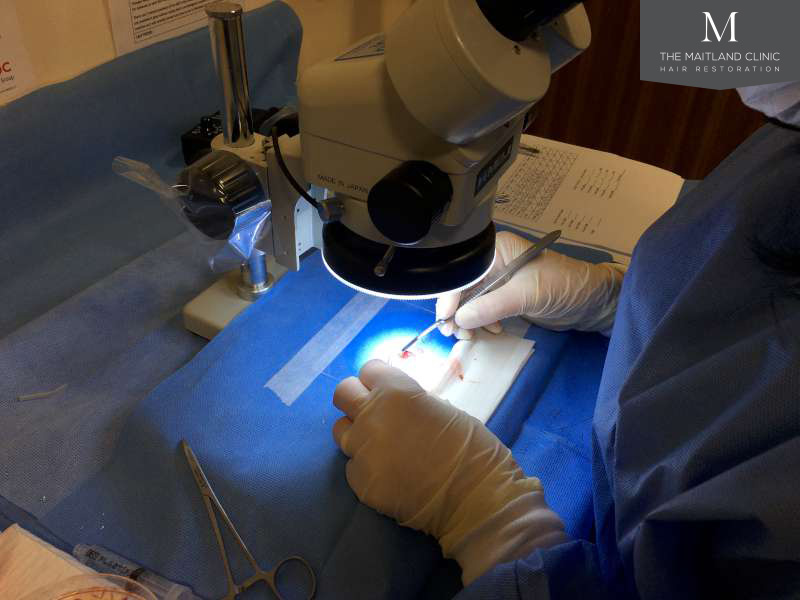
Inspecting the FUE grafts
Janna, Ildi and Dr Ball placed the grafts into the crown and once this was done it was time to extract the beard hairs. I have to confess this was something that I was approaching with a little trepidation, injections under my chin. Dr Ball had applied a topical numbing cream before making the injections. To my surprise the pain was minimal and over quite quickly. 274 grafts were extracted mainly single haired grafts from the beard.
The beard hair grafts were even more splayed than the scalp hair and care had to be taken with the depth of the punch. Thankfully the grafts came out without too much force. Beard hair is never placed as closely as scalp hair naturally but with coarser texture and a nice curl to the hair it can give the appearance of good density. Unfortunately for me I have a high percentage of white hair under my chin so a mixture of colours were taken.
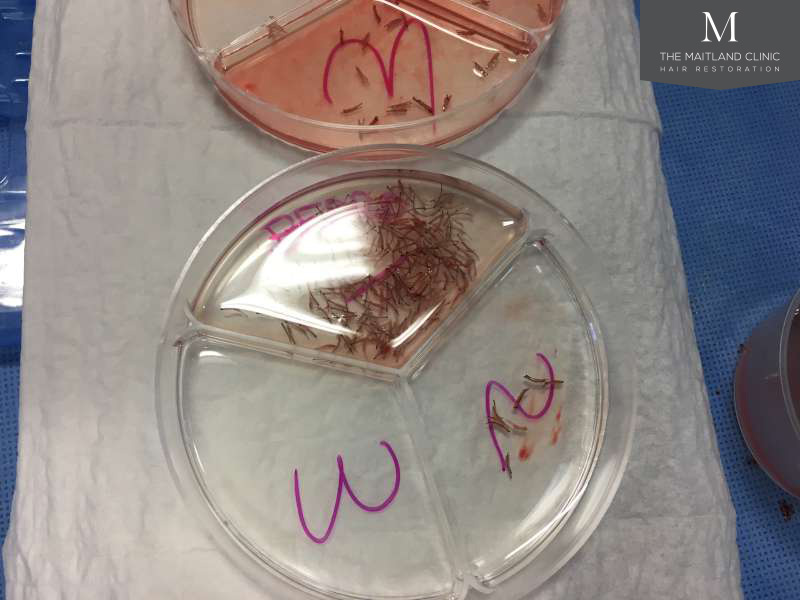
My beard hair grafts
Around 100 of the grafts were placed into the left temple mostly beard hair and just over 150 were placed into the V shaped scar on the right mastoid area again mostly beard hair.
Once placement was completed it was time to go through the post op instructions with Dr Ball for the next week and then return to the hotel. As the hotel was quiet I did not cover my head when walking through reception.

Beard recipient immediately post op
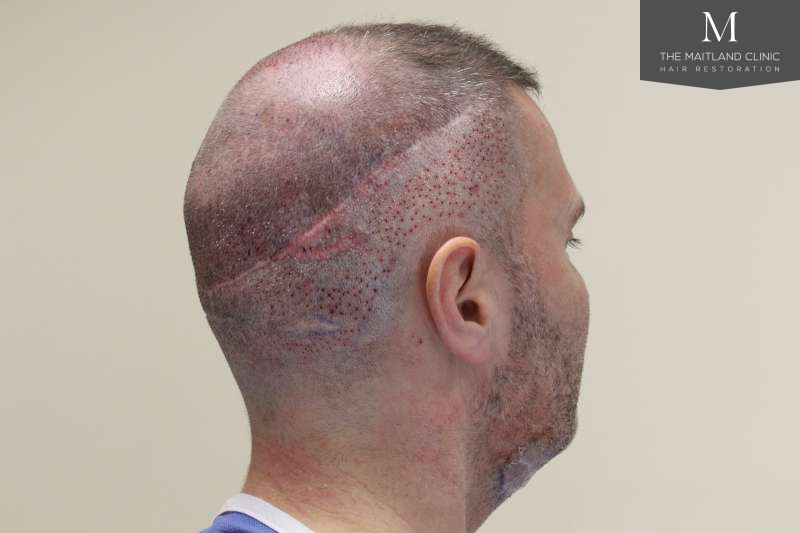
Right side, donor extractions sites below scar area and into V shaped scar
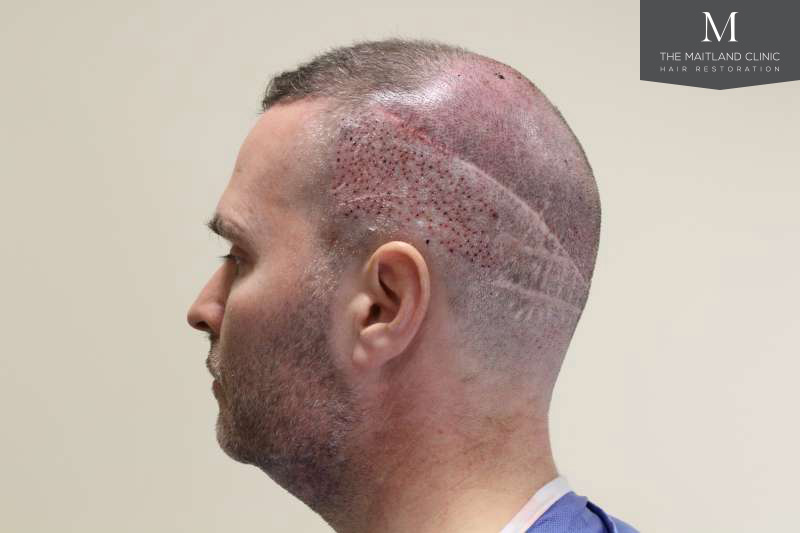
Left side extractions below scar and into left temple
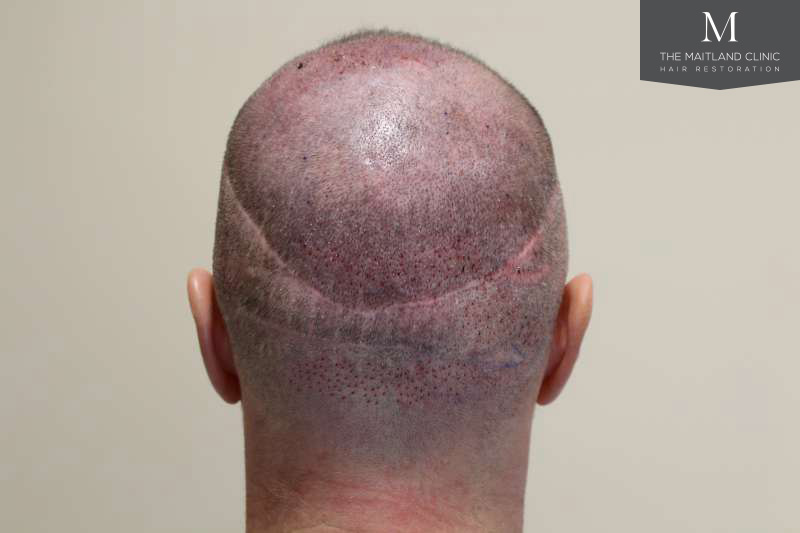
Extractions above and below existing scars
First Night Sleeping
The clinic supplies you with a post op care bag with a course of antibiotics for 5 days, pain killers for the first few days and anti inflammatory tablets for the first 3 days. There is also a neck pillow so you can sleep raised for the first 6 nights and avoid contact with the grafted area. Vaseline to apply to the donor area for the first 6 days and pillow covers. Most important is the ATP spray which needs to be kept chilled so either in the fridge or next to something cold.
The ATP spray is to be sprayed liberally over the recipient area every 30 minutes during the day and 2 hours at night for the first 48 hours. As I had no fridge in the hotel room I used ice packs protected in a towel to keep the solution chilled.
You also need to keep your head elevated to aid with the swelling, as my work was all done to the back and sides I was not expecting any swelling. I propped my pillows up and covered with a protector and then wrapped another protector around the neck pillow and slept between a 45 to 90 degree angle waking to spray the areas. I kept the ATP next to my bed for ease.
The Recovery
I will be adding videos to explain how my recovery is first hand regarding the pain/healing but as they say a picture is worth a thousand words here is my recovery photos in order so you can see just how the recovery period is. For me it has been more difficult as I have had to cover several FUT scars after my head was shaved. Ignoring the scars you can see how quickly I have healed from my FUE at the sides and back of my head and where the grafts were placed. I was really impressed just how soon my beard donor area under my chin had healed.
Day 2 Post Op 12th February 2017
Day 4 Post Op- 14th February 2017
Day 6 Post Op- 16th February 2017
Day 9
19th February 2017
Day 12 Post Op-22nd February 2017
Day 26 Post Op 8th March 2017
15th April 2017
Beard area shaved
Finally, here are my one year post op results of my surgery back in February 2017. To recap around 670 grafts from a mixture of scalp and beard hair were placed into the left left side of crown. As I wear my hair sweeping across from left to right, this was felt to give the best impact from such a small number of grafts into an area that if donor supply was not a problem, 3000 grafts could have been used.
At first I noticed the beard hair as it grew in much coarser and was very wavy but in the last few months it seems to have softened and is now easier to style, it blends very well with the scalp hair around it. The results from such a small number of grafts have made a nice impact in this area.
As for the scar, I have been able to have the confidence to have shorter haircuts which was my goal. The growth in the scar tissue has been good, it was around 150 grafts in the area shown below and around 100 into the high scar by my temple. The area around my ear was the most troublesome but this has helped hide the scar. I still feel a second pass of grafts is needed to increase the density though. When placing into scar tissue you need to place grafts at a lower density because of the blood supply to the scar is more restricted.
Despite having over 9000 grafts removed from my donor it still feels ok. I have not noticed the 650 scalp hairs from my donor and I still feel that we could take more hair from certain areas above and below my scar by FUE in the future.
As for the donor area under my chin, the recovery was incredible and healed so quickly. I have not noticed 274 grafts missing from here and would happily pass through this area again to extract more grafts. I only wish is that my beard hair wasn’t so white!
David Anderson
Senior Patient Advisor
